TheDePaulia
PRITZKER WINS SECOND TERM



Shortly after his 100th day in office, in DePaul’s 125th year as an institution, Robert Manuel was officially inaugurated as the 13th president of DePaul university on Nov. 11.
University community members, Chicago citizens and Illinois Attorney General Kwame Raoul gathered in the Holtschneider Performance Center in Lincoln Park to celebrate Manuel on Inauguration Day.
A sense of excitement hung in the air as proud live brass rang in the procession of university leaders in caps, regalia and robes. The music wafted down from the balcony in a triumphant manner, guiding Manuel as the lights dimmed and the inau guration began.
The theme of the inauguration was dig nity. Dignity was embedded in each of the speakers’ addresses, acknowledging the op portunity DePaul has to create meaningful change as we transition into new leader ship.
Valerie Coleman, a Master of Fine Arts candidate in the Theatre School, read a Langston Hughes poem as a part of a musi cal interlude that preceded Manuel’s inau gural address.
Coleman said that although “Portraits of Langston, IV. Silver Rain” is a short poem, it was important to deliver the piece the way in which it was meant to be pre sented.
She found the poem fitting for an inau guration. To Coleman, the poem is about growth, looking ahead and appreciating the newness of life.
Yumary Briseño looked at her 12-year-old daughter. Her tender eyes gazing up at her, filled with worry.
“Mom, I’m hungry.”
Briseño gave her daughter the only food she had in her home—a few flour arepas and a can of tomato sauce.
“Mom, that’s not food.”
Holding back tears, Briseño realized it was time to flee Venezuela.
Briseño said she did not want to come to the United States, but with the rising economic crisis in her home country, she
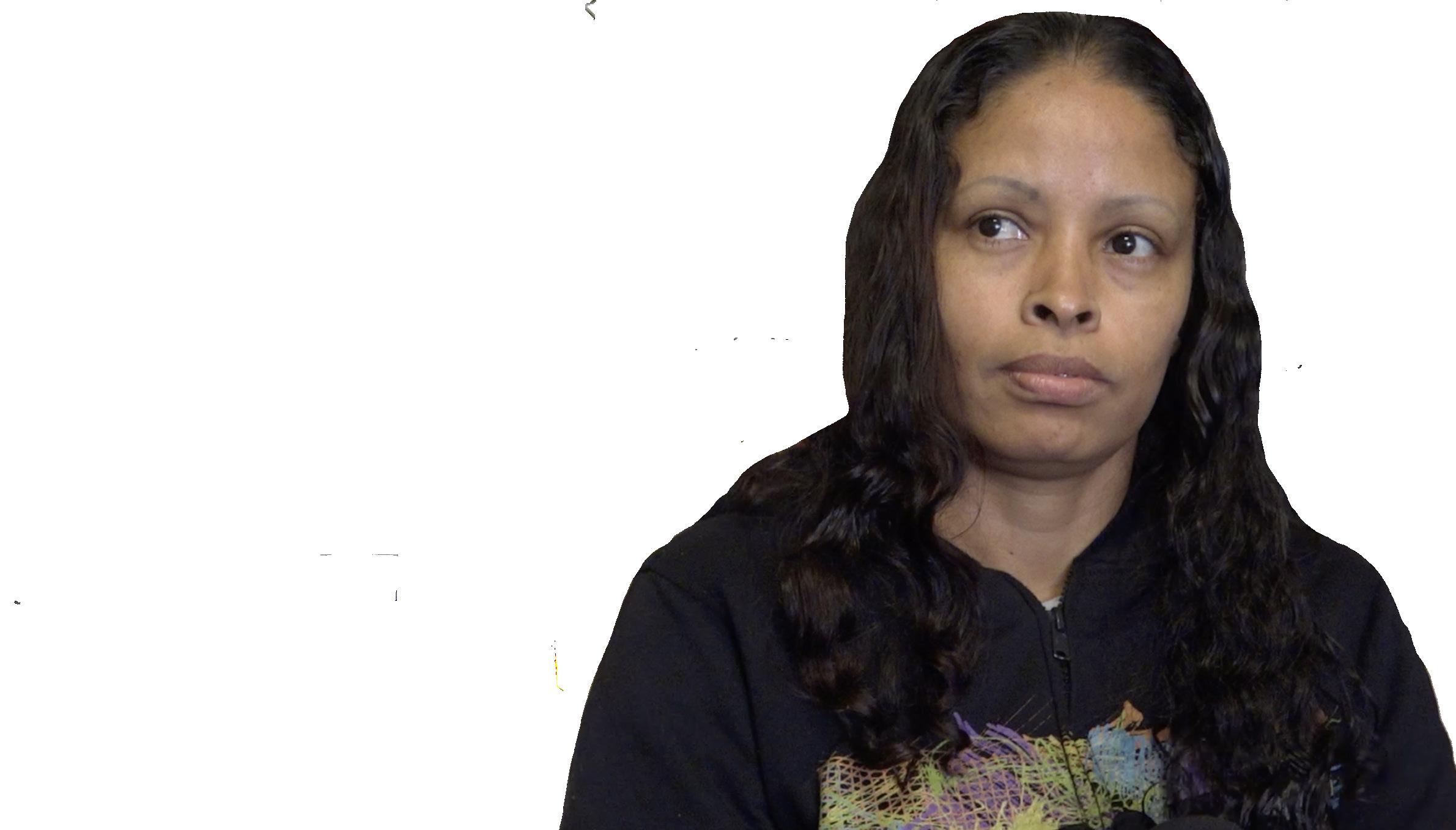
grants are seeking asylum, yet some are unaware they have arrived in Chicago in the first place.
The influx of undocumented migrants is part of Abbott’s plan to send them to Democratic ‘sanctuary’ cities.
Abbott has openly criticized on social media the Biden administration’s attempt to lift Title 42, a federal act which authorizes denying asylum seekers in the U.S. during the Covid-19 pandemic prior to the shipment of migrants.
Despite her experiences,
Elvira and Cortes turned the Adalberto Memorial United Methodist Church in Humboldt Park into a sanctuary for arriving migrants. They provide them with shelter, clothes, food and education on how to navigate public transportation.
Cortes said the church has received around 150 migrants. Their goal has been helping them find jobs, apartments, but most of all, help restore their faith and human rights.
During a church mass, Elvira told her experience as some -
The DePaulia is the official student-run newspaper of DePaul University and may not necessarily reflect the views of college administrators, faculty or staff.

EDITOR-IN-CHIEF | Erik Uebelacker eic@depauliaonline.com
PRINT MANAGING | Nadia Carolina Hernandez managing@depauliaonline.com
ONLINE MANAGING | Patrick Sloan-Turner online@depauliaonline.com
MULTIMEDIA MANAGING | Amber Stoutenborough multimedia@depauliaonline.com
NEWS EDITOR | Kiersten Riedford news@depauliaonline.com
ASST. NEWS EDITOR | Vanessa Lopez news@depauliaonline.com
NATION & WORLD EDITOR | Ruchi Nawathe nation@depauliaonline.com
OPINIONS EDITOR | Samantha Moilanen opinion@depauliaonline.com
FOCUS EDITOR | Una Cleary focus@depauliaonline.com
ARTS & LIFE EDITOR | Lilly Keller artslife@depauliaonline.com
ASST. ARTS & LIFE EDITOR | Jonah Weber artslife@depauliaonline.com
SPORTS EDITOR | Tom Gorski sports@depauliaonline.com
ASST. SPORTS EDITOR | Preston Zbroszczyk sports@depauliaonline.com
ART EDITOR | Alicia Goluszka art@depauliaonline.com
ASST. ART EDITOR | Maya Oclassen art@depauliaonline.com
PHOTO EDITOR | Quentin Blais photo@depauliaonline.com
ASST. PHOTO EDITOR | Erin Henze photo@depauliaonline.com
COPY EDITORS | Amber Corkey | Kara Zubo copydesk@depauliaonline.com
SOCIAL MEDIA EDITOR | Lily Lowndes social@depauliaonline.com

ADVISOR | Marla Krause mkrause1@depaul.edu
Drug & Alcohol Assault & Theft Other
Lincoln Park Campus Crimes: Nov. 2
1) A Harassment report was filed for a person in Munroe Hall.
Nov. 5
2) A Smell of Marijuana report was filed in Munroe Hall.
Nov. 6
3) A Theft report was filed for a person who had items taken from a local business.
4) A Criminal Damage report
was filed for damage in the Quad.
5) A Theft report was filed for items taken at the Fullerton CTA station.
Nov. 7
6) A Criminal Trespass report was filed for an arrest in the Richardson Library.
Nov. 8
7) A Simple Battery report was filed for a student sprayed with pepper spray in
Belden/Racine Hall.
8) A Theft report was filed for a person who had items taken on Oct. 25, 2022
Loop Campus Crimes: Nov. 2
1) A Theft report was filed for money taken from a jacket.
Nov. 3
2) An Indecent Exposure report was filed for an incident on zoom Oct. 25, 2022.
Nov. 4
3) A Harassment by Electronic Means report was filed for a student in University Center.
Nov. 5
4) A Criminal Damage to Property report was filed for markings on the DePaul Center.

Nov. 7
5) A Harassment report was filed for a student in the DePaul Center.
CORRECTION: An earlier version of the article "The attack on Paul Pelosi shows how far America has fallen" was credited to Zach Elliott but Matthew Warakomski, contributing writer to The DePaulia, wrote the article.




La DePaulia es el noticiero oficial estudiantil en español de la Universidad DePaul, enfocado en proveer una voz para la comunidad latinx. Nuestras opiniones no necesariamente reflejan las opiniones de la administración, facultad o personal de la universidad.
JEFA DE REDACCIÓN | Jacqueline Cardenas eicladepaulia@depauliaonline.com
GERENTE EDITORIAL | Santiago PosadaJaramillo managingladepaulia@depauliaonline.com
EDITORA DE OPINIONES, ARTE Y VIDA | Andrea Juárez Hernández opinionesladepaulia@depauliaonline.com
EDITOR DE MULTIMEDIA | Frankie Perez multimedialadepaulia@depauliaonline.com
PRODUCTOR DE PODCASTS | Geovani Camarena gcamare3@depaul.edu
EDITOR DE COPIA | Rodrigo Melgarejo a20181375@pucp.edu.pe
EDITOR DE DEPORTES | Santiago Gonzalez Tijerina sagotijerina@gmail.com
US: facebook.com/TheDePaulia twitter.com/TheDePaulia thedepaulia
thedepaulia
CONTACT US:
www.depauliaonline.com
GENERAL PHONE (773) 325-2285
OFFICE HOURS Friday: 10 a.m. to 5 p.m. Sunday: 10 a.m. to 5 p.m.
ADVERTISING business@depauliaonline.com
NEWS TIPS news@depauliaonline.com
ADVERTISING business@depauliaonline.com

Student Government Association (SGA) held their first public discussion acknowledging the recent outbreaks of antisemitism and anti-Jewish incidents on campus on Thursday, Nov. 11.
SGA received an anonymous letter from a DePaul senior roughly a week and a half prior, which prompted a closeddoor discussion by the general body during their meeting on Nov. 3. A statement was then drafted by SGA senators David Hupp, senator for fourth and fifth year students, and Avery Schoenhals, senator for the college of communication and sophomore, following the meeting. It was later amended in an open session on Nov. 11 with input from members of DePaul’s Jewish community.
“We wanted to destigmatize the notion that we were doing something private,” Kevin Holechko, SGA president and senior, said. “Even though the process did take significantly longer than it might have in a closed-door discussion, I firmly believe we did the right thing. We took the first steps in addressing this problem as a community.”
The statement was originally drafted by junior Gabriel Goldberg, Senator for Mission and Ministry, and then edited by various members of SGA. One of his main concerns was addressing the Vincentian mission and religious values in the response. Goldberg believes his perspectives as both an SGA senator and a Jewish student helped him bridge the gap between both groups.
“This is a culture and a religion that speaks out in a very Vincentian perspective by asking what must we do for our community,” Goldberg said. “We as DePaul students are recognized as individuals who give and support a community of diversity. Because of this, it is our duty and privilege to be able to get this interfaith and intercultural experience.”
Junior Chava Novogrodsky-Godt, social chair of DePaul Hillel, a Jewish student organization on campus, believes the statement is a promising first step toward change but wants to see action behind it. She said she acknowledges SGA wanting to work with the Jewish community and hopes the relationship that comes from their collaboration will inspire longer conversations about the issue.
“Oftentimes, especially college here, I feel Judaism has been conflated to politics, war and conflict, but it is a religion, it's an ethnicity, it's an ethno-religion. I wish people had a better understanding of what it was,” Novogrodsky-Godt said. “It's important to listen to minority voices and understand who you're sharing a campus with, even if it's a small population.”
Of the Jewish student leaders present at the meeting, each student echoed sentiments of hope that addressing the antisemitism and anti-Jewish rhetoric on campus will lead to increased education about Judaism at DePaul. They encourage all students, regardless of faith or background, to attend Jewish cultural events as a way to increase participation for their organizations and create more visibility for Jewish students.
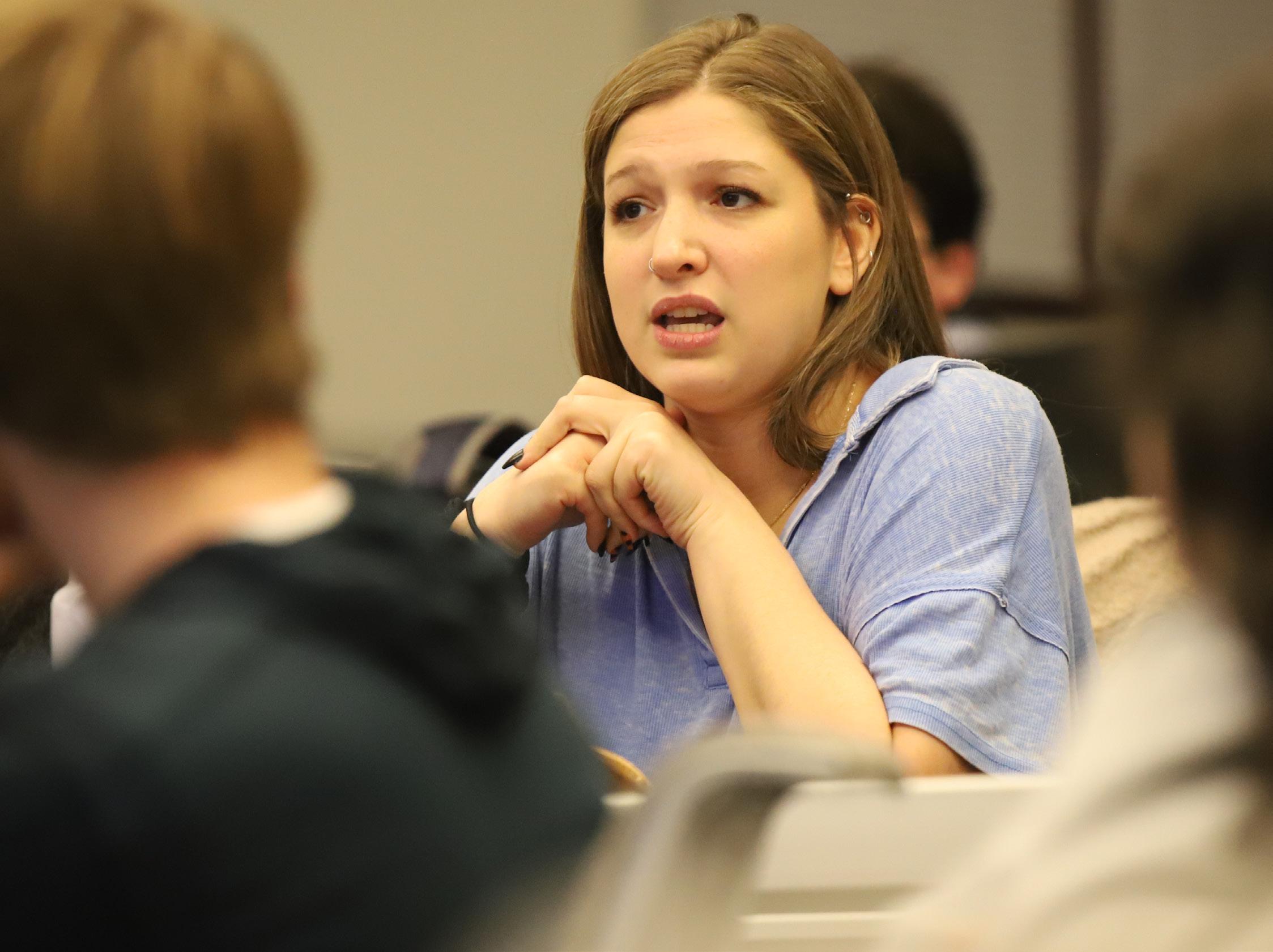
“My best way to fight antisemitism is to be more involved in the Jewish community, to go see my Jewish friends, to learn about something Jewish and I think that is something anybody can do,” said senior Emily Fridland, president of Chabad, a Jewish student organization on campus.
In their statement, SGA added links to resources for students experiencing
antisemitism and anti-Jewish rhetoric on campus. These resources include DePaul Hillel, DePaul Chabad and Alpha Epsilon Pi (AEPi). Justin Fisher, president of AEPi, vice president of Chabad and senior, said he believes the purpose of these organizations is to create a safe space and build a community for Jewish students. He said this is mainly done through support, which is especially important during the hard times Jewish students currently face.
“I know personally this does feel like my home away from home even though I’m not far and because I’ve joined Chabad and joined Jewish life it truly has been so incredible,” said junior Danie Shvartsman, treasurer of Chabad. “Having this support and this community, I really never feel alone.”
A religious pluralism training is currently being developed by the Office of Mission and Ministry to educate the community about issues regarding religious oppression. The training will include acknowledgements about antisemitism, along with Islamophobia and Catholicism’s impact on marginalized religions.
“It's an interesting thing because we go to a Catholic university, so how much can we expect support for the other faiths?” Fridland said. “But, it's not necessarily support that we’re looking for, it's respect. This year there has been an effort to have interfaith events and to have religions
come together to learn about each other. Just having student government and administration present at those I feel shows us the respect that we’re looking for.”
While all agree that what they have seen thus far from SGA and administration is a good indication of change, Fisher said it may come too late since these issues have been happening on campus for years. He said conversations with administration did not stick in the past, but the recent media coverage of antisemitism and the anonymous letter that was sent to SGA has finally spurred DePaul into action.
“I'm grateful this is happening but in the past it was never as much as we’re seeing now,” Fisher said. “The biggest part with this new administration is there are people pushing to make sure every student group, not just the Jewish community but all communities, are heard and cared about.”
Simply by inviting Jewish students to the meeting and listening to their input on the statement, the Jewish student leaders are hopeful for the positive outcomes they believe will follow SGA’s action. While there is still more to be done, Novogrodsky-Godt hopes it is a movement
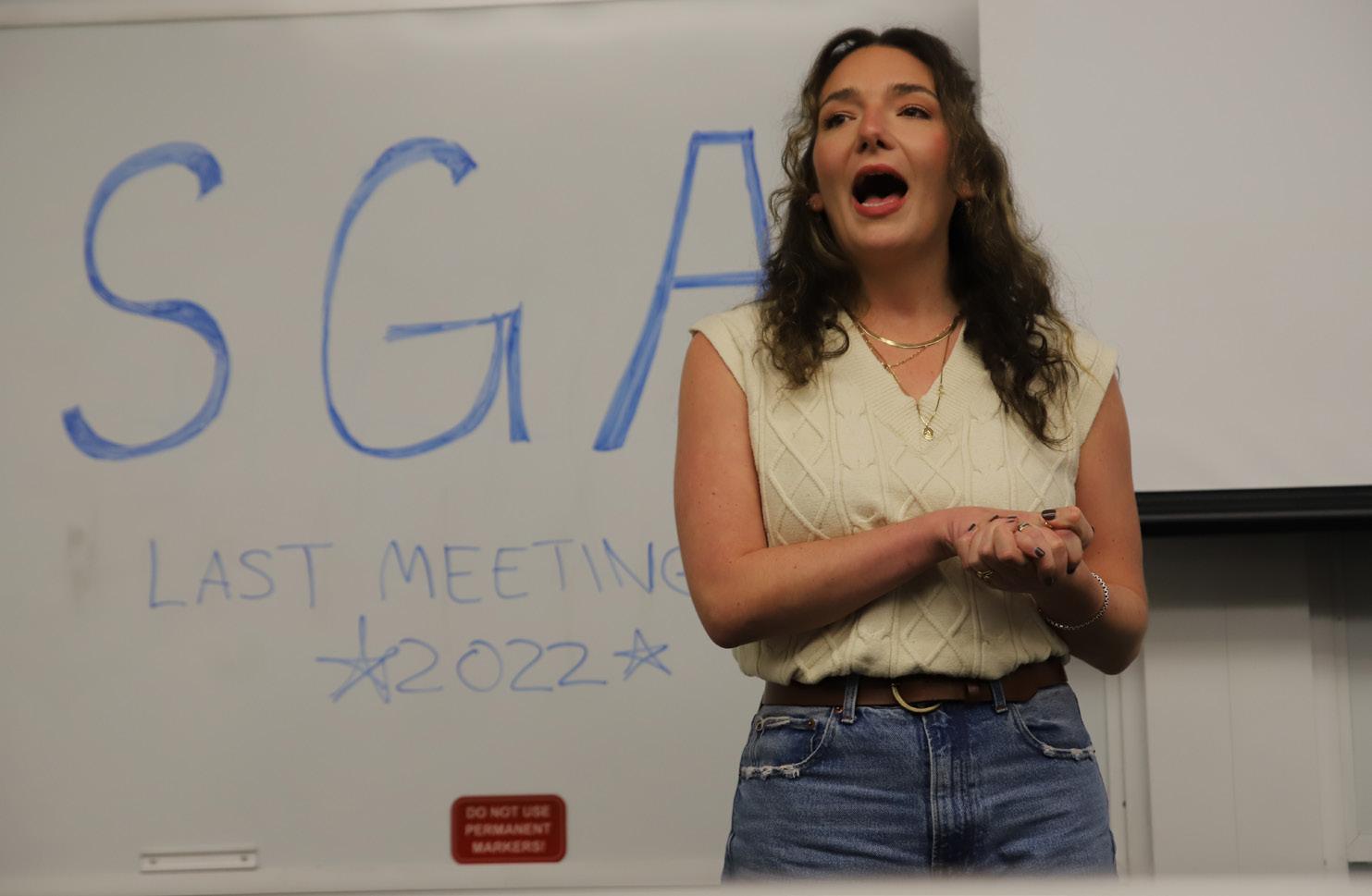
toward partnership and change.
“It often feels like people are talking about us but not with us or to us,” Novogrodsky-Godt said. “I do think this is a huge step for SGA to put out a statement about being Jewish on campus and I feel that we’re all ready to work to make sure something does come out of it. It feels great to have some recognition.”
“But, it's not necessarily support that we’re looking for, it's respect.”
Emily Fridland President of Chabad and senior

On Oct. 6, DePaul’s School of Nursing announced a relaunch of their Bachelors of Science in Nursing (BSN) program. This major is for new students at DePaul that currently do not have nursing licensure or a bachelor's degree. This launch comes at a time with projected worsening of nursing shortage, via American Association of Colleges of Nursing.
This path is one that students have been looking for at DePaul. The program received 1000 applications for the program, which only has 35 spots available according to Newsline.
“The BSN option is the more traditional option for becoming a registered nurse,” BSN program associate director Stephanie Byrd said. “This option is desired by DePaul students, and we are happy to be able to meet that need.”
Students currently in the BSN program appreciate the opportunity provided.
“I chose the BS program at DePaul due to not only the urban environment but the tremendous amount of opportunities given,” freshman BSN student Olivia Palczewski said. “Even though the BS program at DePaul was relaunched this year, I gravitated towards the place to build my knowledge as a future nurse.”
The BSN program comes in addition to the school's Master’s Entry to Nursing Practice (MENP) for non-nurses. Unlike the MENP program, this is for students without a previous degree.
“After having the MENP, I believe that many future students applying to DePaul will gravitate toward this new program. Having that option of pursuing nursing automatically after high school is an amazing start to achieving future goals,” Palczewski said.
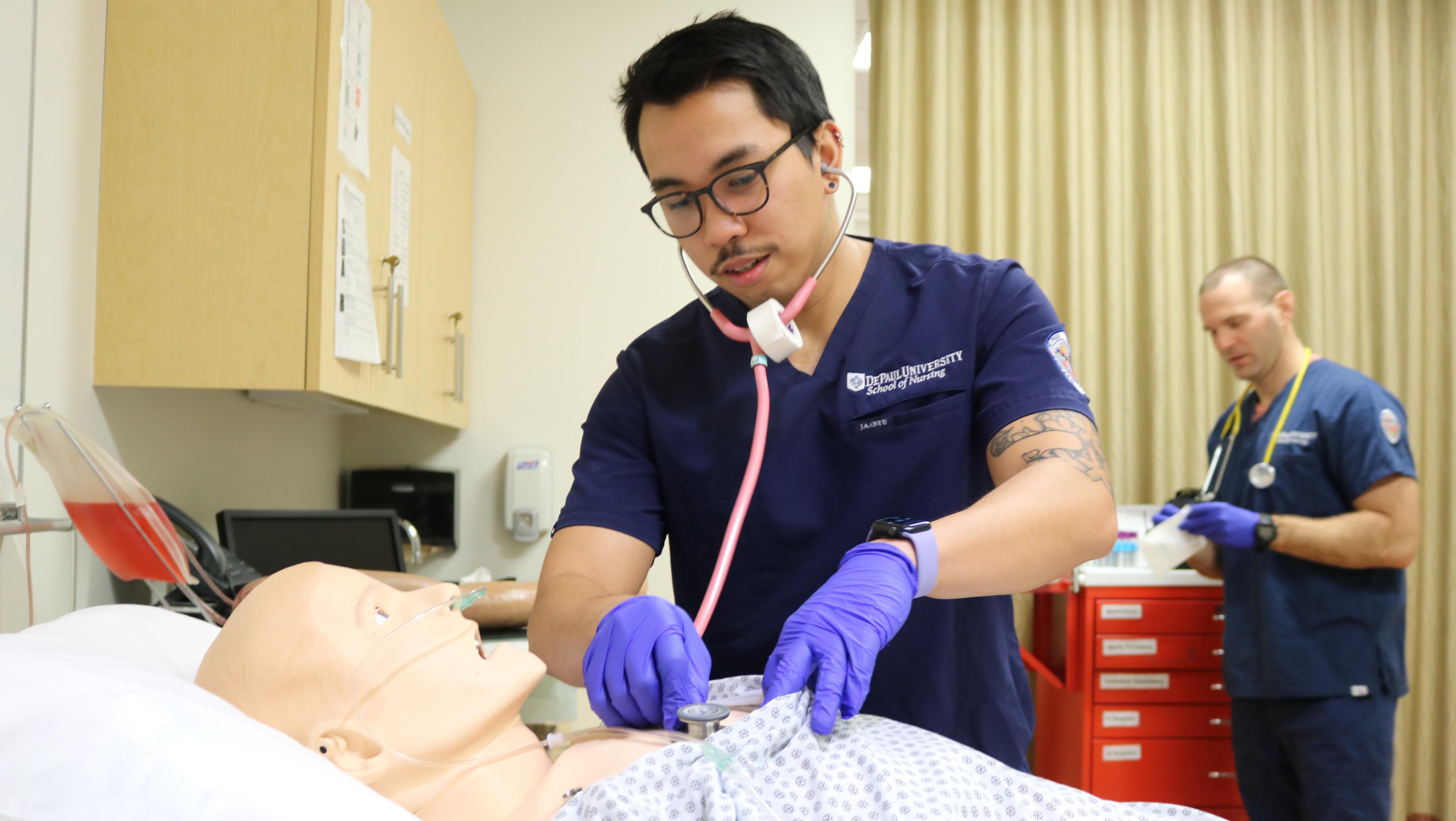
In addition, the school offers a master of science in nursing (MSN) and a Registered Nurse (RN) to Masters of Science in Nursing (MSN) program,
Neither of which are undergraduate offerings.
However, students who have already started their college education are left without an undergraduate nursing option at DePaul.
“You can enter our BSN program directly from high school, while current DePaul undergraduates and transfer students may consider our Master’s Entry to Nursing Practice program,” via the program listing on the School of Nursing website.
“I did not have the opportunity to apply to the BSN program at DePaul because I already have my bachelor's,” graduate student Ryann McKinnell-Jaroslawsky said. “I wanted to further my education which is why I chose DePaul’s MSN program.”
The School of Nursing’s reasoning for limiting the program to high school graduates is because of the requirement to fulfill DePaul’s liberal arts core and the drive to create a tight-knit cohort.
“[This program] allows liberal arts curriculum to be threaded throughout the program, even while taking nursing courses,” Byrd said. “It develops a nursing cohort that progresses together through the four years at DePaul. Students are able to connect with other students, early in their studies, that are having similar educational experience.”
Students already in the program think it will be a popular option for people exploring their college options.
“I believe that many future students applying to DePaul will gravitate toward this new program,” Palczewski said. “Having that option of pursuing nursing automatically after high school is an amazing start to achieving future goals.”
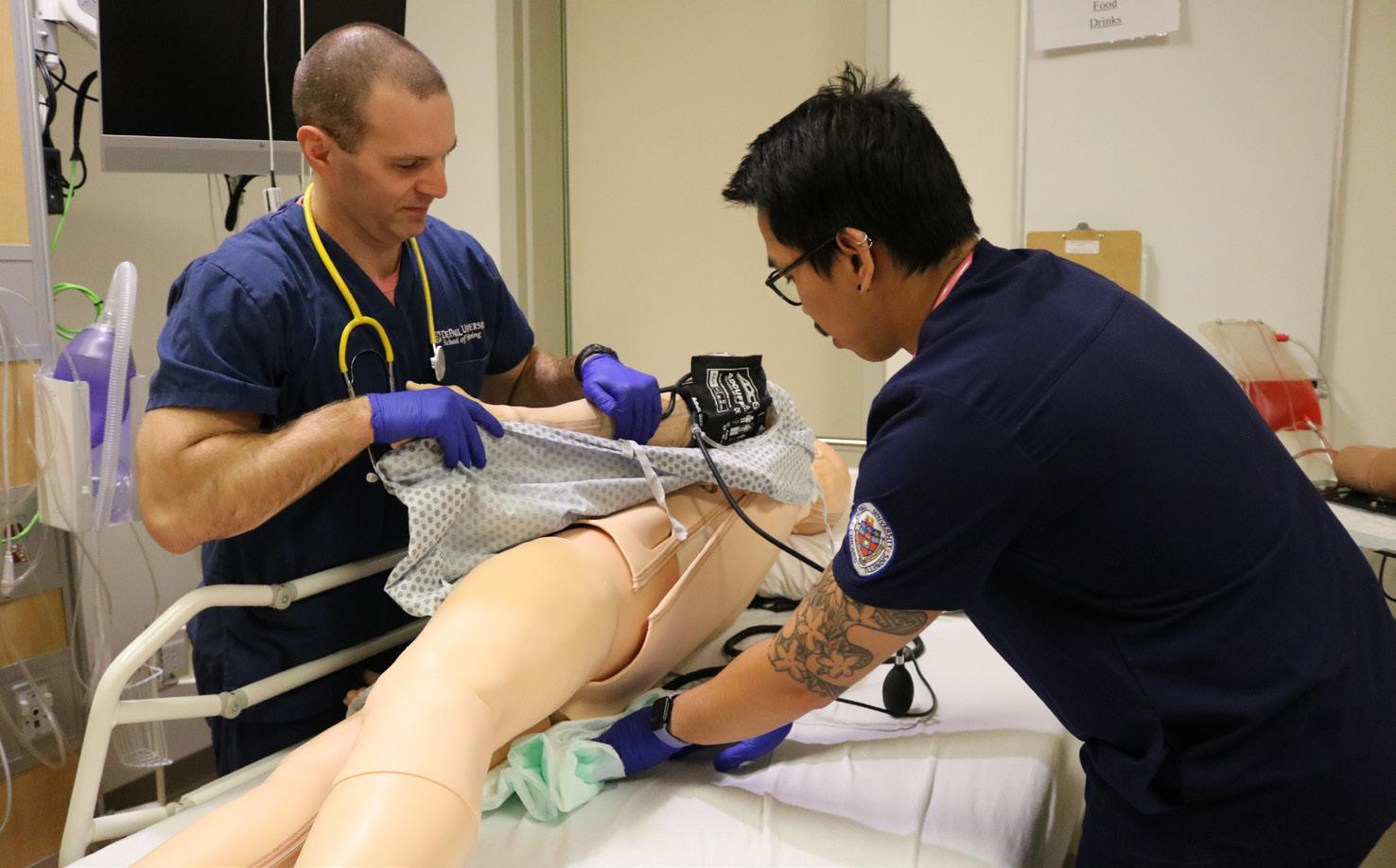
Despite 83% of DePaul students being commuters, the university does not provide Metra passes or discounts. Many students are forced to pay hundreds of dollars each month out of pocket to attend their classes because they are commuters.
DePaul, as an urban dual-location campus with a large population, only has on-campus housing for 2,800 student residents, requiring most students to navigate to campus on their own.
DePaul offers U-Passes to full-time students, allowing them unlimited access to CTA trains and buses while classes are in session. However, DePaul only budgets for students who travel around the city, not those who live outside of the L's reach.
The Metra does offer a student discount, but it only applies to students in grade school or high school. College students are not included in the program, and some DePaul students say that this is impractical for those who must take the Metra to DePaul every day.
In 2019, DePaul brought the topic of a Metra discount to the attention of students, but let the idea die.
“Would you ride the Metra more regularly if they offered a DePaul student discount?” DePaul tweeted. With 89.3% voting yes, but no changes have been made.
Many students are frustrated and would like DePaul to pay attention to how students have limited budgets and would benefit from a Metra pass or discount.
Graduate student and commuter Dilusha Silva says she used to spend nearly $200 a month on the Metra before switching to the monthly Super Saver pass, but she still spends $100 monthly.
“I am putting myself through grad school on an extremely limited budget,” Silva said. If the university provided a Metra pass like U-Pass, it would help with all my expenses.”
The Metra provides a wide range of tickets, including one-way tickets, day passes, monthly tickets and more.
Metra ticket prices also vary according
to the fare zone. The farther you travel, the higher the fare prices, depending on the originating and destination station.
Other students, like freshman and commuter Amy Kostadinov, travel over 40 miles weekly, if not daily, to attend classes.
“Being a freshman, I was required to take Discover Chicago, so I commuted five days a week and I did not have Fridays off for a little over a month, but I typically commute four to five days out of the week,” Kostadinov said.
Kostadinov and other students say they can spend up to an hour and a half just getting to DePaul. While it varies for many individuals, some students spend the majority of their day sitting on the train.
“It’s realistic for commuting college
students to receive reduced Metra fares just like K-12 students,” Kostadinov said. “My income has been affected and reduced fares would make college-related expenses a lot easier for me.”
Along with not offering a Metra pass or discount, some DePaul students feel like the university is shortchanging students by not allowing their U-Passes to run year-round, as U-Passes are suspended during each academic break.
Senior Sam Gutterman thinks it is unfair that students must pay out of pocket during breaks to ride the CTA when having a DePaul U-Pass.
“It would be helpful if the U-Pass was active so I wouldn’t have to spend money on something that is already included in my tuition,” Gutterman said.
Commuter students do not live on campus, and many of them, like sophomore and commuter Alina Choughale, find themselves spending a lot of money on food.
“A Metra pass would allow me to save money and use it toward other expenses,” Choughale said. “I find myself spending a lot of money on food.”

Until DePaul offers a metra pass or a discount, 83% of DePaul's population will continue to spend money out of pocket and remain dissatisfied.
“I hope for the best,” Silva said. “Given the number of students that commute to DePaul, hopefully, the university would be more considerate and introduce a Metra pass for students.”
In the Loop campus, the Commuter Student Lounge is located in DePaul Center Room 11027. The lounge is equipped with seating, electric plugins for charging, study tables and TVs. The space is open 9 a.m. to 7 p.m. Monday through Thursday and 9 a.m. to 5 p.m. on Fridays.
Students
register their bike to be under the protection of DePaul by filling out a registration form, which can be accessed via the QR code on the right. The corral is located by McCabe Hall.
“I think this poem represents the new direction that DePaul is going towards,” Coleman said. “We have a new president and he speaks about not running away from the storm, but going towards the storm.”
She felt it represented the way DePaul and its community members can prosper in the university’s new chapter with a new president.
Previous presidents A. Gabriel Esteban and Dennis H. Holtschneider helped welcome Manuel into the university’s highest office. They presented Manuel with the Chain of Office, a symbol of his commitment to all students in DePaul’s ten colleges and schools and his responsibility of promoting DePaul’s mission and values.
Once he was presented with the Chain of Office and the university’s Mission Statement, Manuel stepped up to the podium for his inaugural address.
Before he could speak, Manuel was met with a standing ovation. He placed his hand over his heart, appearing choked up by the overwhelming response from the crowd.
“I haven’t done anything yet, but thank you!” Manuel joked.
DePaul’s 13th president has been consistent in his pursuit to reach out to the community, noting that he has had over 1,800 community conversations in his time at DePaul. He was adamant that he would craft a vision based on what stakeholders, students, faculty and staff want for DePaul.
Thus, it was fitting that Manuel’s address was not a speech about himself, but a speech grounded in the people that he has met and the people he will serve.
He acknowledged the hope that community members share for DePaul’s future. Manuel recognized the potential the university has.
“It’s time to build the DePaul we know the world needs and create the model for higher education in the U.S.,” Manuel said.
In his address to the community, Manuel revealed his aspirations for DePaul. Since he was announced as DePaul’s 13th president, Manuel proclaimed his belief that the university has the tools to become the next leader in higher education in the United States. On Inauguration Day, Manuel spoke about his desire for DePaul to spread its mission to the world and address global problems.
“We will bring forward the gifts of those in our community to harness the power of our social networks and connect our students to global issues,” Manuel said. “We will model the civility we want the world to adopt. We must use our place in this world to act.”
Manuel showed that his administration is acting upon DePaul’s potential by announcing three initiatives that were approved by the Board of Trustees.
According to Manuel, DePaul will set aside $20 million from the university endowment to fund interdisciplinary efforts. The university will also allocate additional endowment funds to reconstruct DePaul’s digital presence to “show DePaul’s story to the world, rather than just tell it.”
Manuel also announced that the Board of Trustees agreed to eliminate the Return to Principle investment strategy and create a DePaul Investment Fund that will be used towards different initiatives that the university needs each year.
Student Government Association (SGA) President Kevin Holechko was supportive of Manuel’s commitment to interdisciplinary efforts. He noted that it was something faculty and staff have wanted from the university.
“I think it’s a wonderful thing that the university needs,” Holechko said. “It’s one of those calls to action that the university asked Rob when he first came to DePaul and he has done an excellent job working with our Board of Trustees to make sure that’s something our faculty and staff can get.”
Holechko was also supportive of allocating more funding to support DePaul’s online presence.
“If you are around me long enough, you’ll hear me constantly say that DePaul does not market itself correctly to the wider Chicagoland community or really the world,” Holechko said. “We are finally [taking] some necessary steps that we need to address issues of enrollment, to address who we are as an institution and what does the world perceive of us. I’m ecstatic about it.”
Manuel has not had any meetings with SGA to talk about what DePaul could do to improve its online presence, but Holechko said that there are many paths the university could take, including revamping its website or changing branding.
According to Holechko, SGA has had a successful relationship with DePaul’s new president. The representatives are in favor of Manuel’s shared governance approach and feel that collaborating with students, faculty and staff is an effective way to address the community’s needs.
“I’m looking forward to the continuing conversations as a university,” Holechko said. “We have people in the right places in all aspects. We have a DePaul community who’s ready to tackle challenges and issues that are not only facing DePaul internally but challenges of the world.”
Other students voiced their confidence in
Manuel to put his best efforts towards DePaul.
Senior Samantha McKeown entered the raffle to watch the inauguration in person. While she did not win, McKeown came to the post-inauguration ceremony University Celebration in McGrath-Phillips Arena. She has enjoyed the change of pace from the previous three years she has been at DePaul.
“I was pretty excited to have a new president,” McKeown said.

McKeown has paid attention to Manuel’s efforts to connect to the DePaul community, from adding students on the social media app BeReal, to sending out a university-wide survey, to walking through the Student Center in between classes.
“I’ve been here for three other years, and I never once saw the previous president on campus, and I’ve seen [President Manuel] multiple times,” McKeown said. “It just makes a different type of impression,
it makes you want to go to things like this more.”
Jenna Gohmann is a sophomore transfer student. While both she and Manuel are new to the university, Gohmann feels that Manuel is trying to be more involved at DePaul.
“He’s trying to get a connection with the students and not just being at the school to be at the school,” Gohmann said.
Holechko noted that while the inauguration was meant to celebrate Manuel, it also celebrated DePaul’s future. When the president is committed to the success of the university, everyone at the university succeeds.
“When DePaul succeeds, we all do, regardless if we’re current students, alumni or faculty and staff,” Holechko said. “When the university is successful, that’s reflective of a great community that is equally invested in it.”
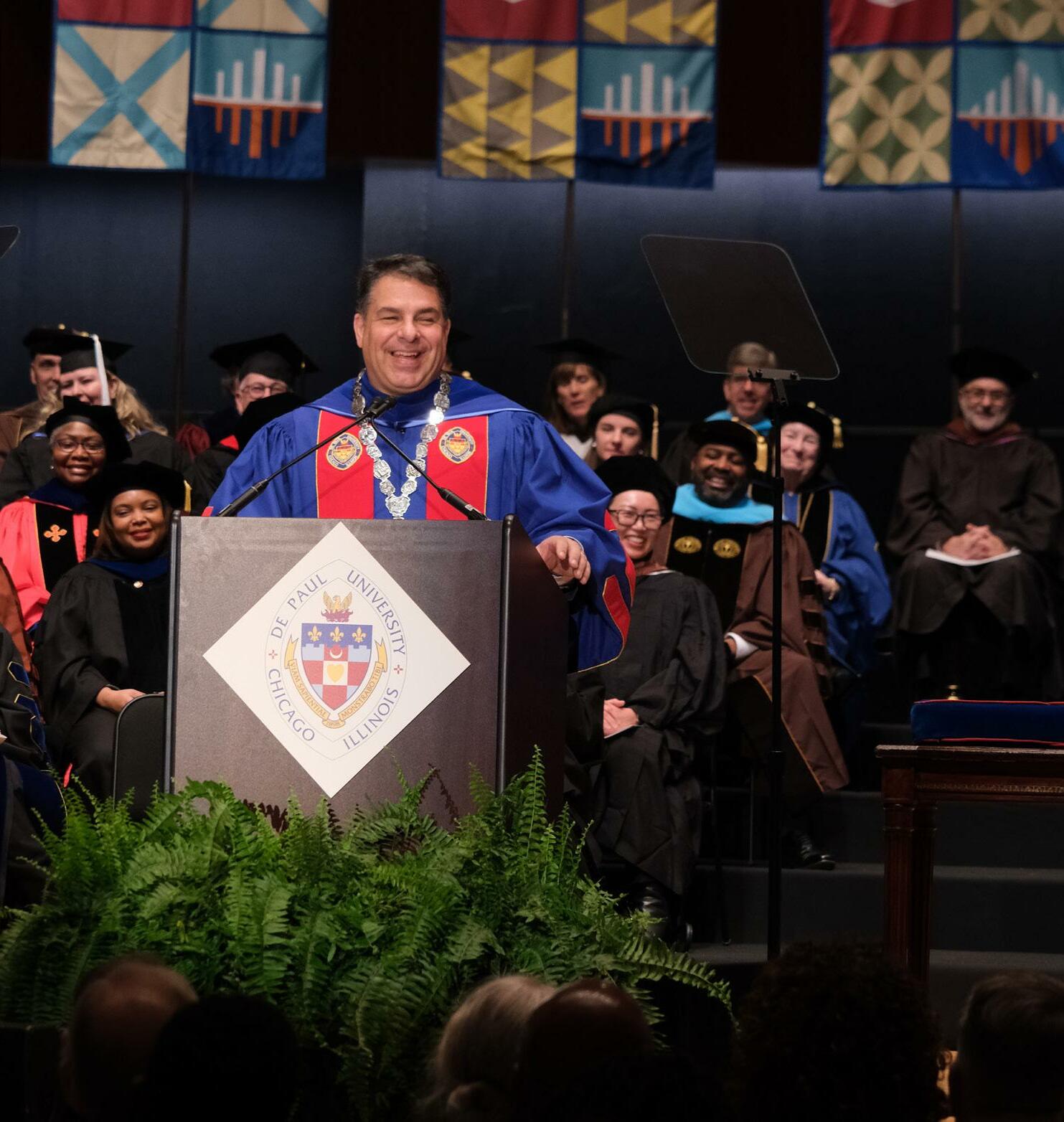
“We are finally [taking] some necessary steps that we need to address issues of enrollment, to address who we are as an institution and what does the world perceive of us."
Kevin Holechko SGA President
Many Chicagoans do not immediately assume Chicago is a hometown to veterans and their families, but on Friday, Nov. 11, the 11th floor of the DePaul Center was cramped with veterans and their loved ones.

This year’s Veterans Day Breakfast event had one of the highest turnouts the event has ever had. Throughout the crowd were widows of veterans who carried roses with them and wore jackets with American flag fabric on the back of them, veterans wearing their uniforms, ROTC cadets, student veterans and DePaul administrators.

Vaughn Cooper, a Marine Corps veteran and senior, said he was excited about the event but did not anticipate as big of a turnout as there was. He said he felt very supported by the DePaul community.
“It feels great to be here,” Cooper said. “Today's turnout is incredible. It's awesome to see people from different backgrounds and branches come together to honor all veterans.”
Every year, the breakfast serves as a meeting place not only just for DePaul veterans, but veterans in the Chicago area as well. While the focus is mainly on student veterans, the scene provides an opportunity for veterans of all kinds to meet and bond over their experiences.


“Whether we deployed overseas, stayed within the United States or served in different branches, veterans have this passion [that helps create] the strongest, most meaningful connections with other veterans,” said Brandon Carroll, Depaul junior, student veteran from the Marine Corps and veteran liaison. “These bonds go so far to say that our military friends are not just friends but family, simply because we share with each other and
share the same blood, sweat and tears.”
This year, for the first time, the Veterans Affairs Office is standing on its own, hence why there was only one Veterans Day event as opposed to the several that have been done in the past. Regardless of it standing on its own, Liam Turman, DePaul’s Veterans Benefits coordinator and Army veteran, said he was proud of the participation of so many veterans, student veterans and supporters.
Another first for the office was the Veterans Day Breakfast being the first Veterans Day event a DePaul president has ever attended. DePaul President Robert L. Manuel made a point to acknowledge the veterans and student veterans in attendance and thanked them for their service.
During his speech, Manuel pointed out one of the Board of Trustees members in the crowd who himself was a veteran. Manuel said his “fingerprints are all over university leadership” in making progress to help veterans at DePaul succeed.
“His views, his passion, his identity is allowing us to understand the diversity of the student population,” Manuel said. “I want you to know that you are represented at the highest level of the university and in [the] conversation.”
At the end of the event, all attendees were invited to a free breakfast and an opportunity to converse with one another. Many veterans swapped stories amongst each other, laughter and smiles filling the whole room.
“It's our day, and it's very humbling and overwhelming,” Carroll said. “It's our day to enjoy. Many people have different perspectives on the military, which is perfectly fine, but Veterans Day is our day to honor and reflect on what we do, what we have done and what we will continue to do.”
Vanessa Lopez contributed to the reporting done in this article.
While the DePaul spring festival's (FEST) headliner has yet to be announced by the DePaul Activities Board (DAB), the possibilities are nearly endless. On Thursday, DAB sent out the headliner survey, giving students 21 options to choose from.
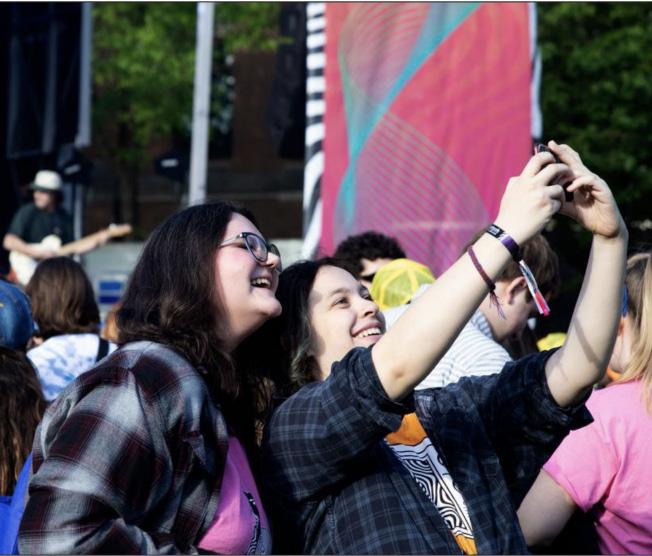
The first FEST was held in 2019, and it is returning for the spring quarter, giving DePaul's new president, President Rob Manuel, his first FEST experience.
“I'm excited to see everyone back together, especially after Blue Demon Welcome," Manuel said. “I'm psyched to see who we bring and who students vote for, and especially the student turnout.”
Big Time Rush, Yung Gravy, Jaden Smith, Wallows and Flo Milli are among the potential headliners. Manuel wishes for one of these headliners to come to FEST.

“I would love to see Big Time Rush,” Manuel said.
Other students like junior Kate Holloway are also hoping for Big Time Rush to headline because they are very popular and give off a 2000s vibe.
“I am looking forward to seeing who will be playing this year as last year was a big success,” Holloway said.
Junior Emily Figueroa is hoping for more students to attend this year for a sense of community and excitement.
“The survey sent out potential artists like Jaden, WILLOW, and Flo Milli,” Figueroa said. “These are some of my favorite artists and being able to see them in a close venue like the quad would be an amazing experience.”
No date or location has been set, but FEST has been held at the quad in past years.
“I’m hoping to see more people attend this year,” Figueroa said. “I want FEST to feel like a big concert, so it would be ideal for all the DePaul community to attend. At concerts, you feed off of each other’s energy, and you can’t do that in a small crowd.”
Last year, for the first time since the Covid-19 pandemic, DePaul hosted performances by bbno$ and 2 Chainz as part of an end-of-the-year celebration. FEST brings in artists for students to see perform at low-cost prices ranging from five to 10 dollars in the past few years.
With FEST becoming a DePaul tradition, students think adding more attractions could savor the end-of-the-year festival.
“A photo booth would fit perfectly in the quad and provide students with a tangible memory,” Figueroa said. “Students love Polaroid cameras, and it would be a step up from last year.”
While students await who the 2023 FEST headliner will be, students can fill out the survey on DeHub to vote for their favorite option.
“I am excited to enjoy FEST with students and hopefully enjoy some BTR [Big Time Rush],” Manuel said.
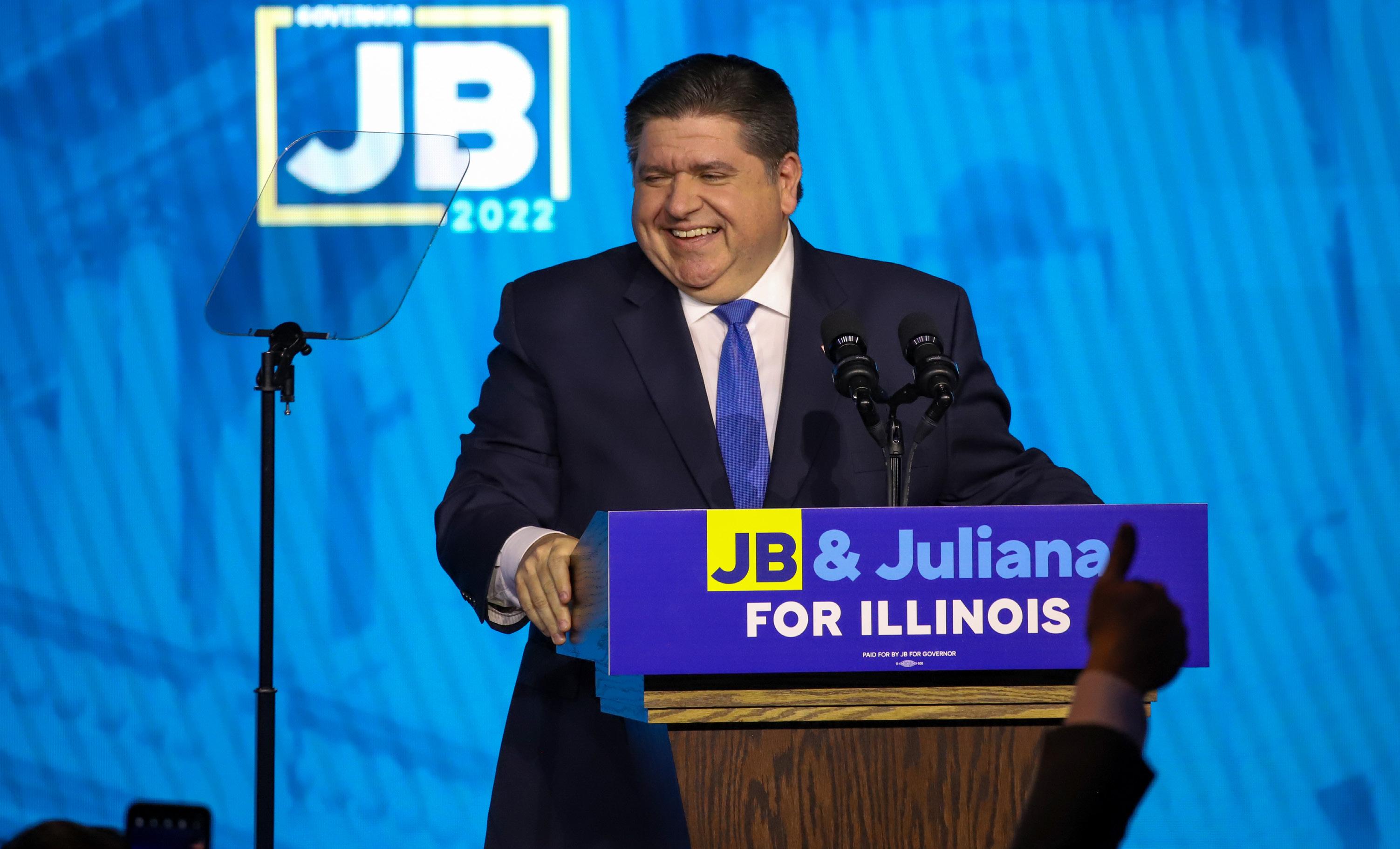 By Kiersten Riedford News Editor
By Kiersten Riedford News Editor
The victory party for Gov. J.B. Pritzker’s re-election was like a scene from a movie.
After Pritzker and Lt. Gov. Juliana Stratton gave their victory speeches, confetti rained down on the crowd like snowflakes during the first snowfall in the city. Glasses were raised, ice clinking in glasses of champagne and cheers echoed throughout the banquet room of the Marriott hotel in celebration.

The Illinois governor’s race was a rather smooth-sailing election this year. The announcement of Pritzker’s win was around 7 p.m. on Tuesday, Nov. 8. Following the announcement of Pritzker’s victory, his opponent, Republican candidate Darren Bailey, called Pritzker to congratulate him and concede.
Pritzker finished with a 54% majority vote, Bailey finished with 43.3%, according to The New York Times.
One of the main campaign themes Pritzker ran on was protecting reproductive rights and a person’s right to choose. For people like Breanne Dickson, a 28-year-old Black woman, supporting Pritzker wasn’t a decision, but more of a necessity.
“His willingness to protect the rights of others — of people that don't look like him, that don't have the same issues as him, that don't have the same problems as him or have the same politics as him — to be able to represent them without any issues is really incredible,” Dickson said. “I personally am grateful that he was governor during the whole Roe v. Wade overturning because it deeply affected my life.”
Similarly, Ald. Timmy Knudsen (43rd) said his connection to Pritzker has been long-term, so attending the event to support Pritzker was a given. Knudsen worked on Pritzker’s primary campaign in 2018. Knudsen marched in several pride parades for Pritzker, knocked on doors and petitioned for him. Knudsen said he worked hard for Pritzker because he was a politician who actually showed up for LGBTQ+ rights.
“We’ve got to celebrate people who [have] good, strong leadership,” Knudsen said. “I think, more so than just celebrating J.B., we celebrate all the work he does statewide for candidates of all different types of [Democrats].”
Throughout the night, speakers had a message of light coming out of darkness. Stratton made a point of noting the darkness of the current state of the world, both financially and due to the loss of civil rights. But, she made a point of frequently saying “light always finds a way out of the darkness.”
“Our light shines because with this election victory comes an acknowledgment that our fight for equal rights and racial justice is not over,” Stratton said as she pointed directly to a crowd member. They pointed back to her and yelled out, “C’mon now!” to encourage Stratton to keep speaking.
“There is still so much work to be done to ensure that Black, Brown, Indigenous and AAPI lives are valued and voices are represented in every space where decisions are being made,” Stratton yelled out to the crowd. “Here in Illinois, we can lead the way. We can light the path. We can make racial equity a reality.”
While Pritzker did not make many attributions to the theme of light and darkness, he did hit home on the need to fight for democracy and rights. Pritzker mentioned his many wins throughout his previous term, noting how he helped “raise the minimum wage to a liveable wage” and even legalized cannabis, to which a crowd member said: “That’s the real winner.”
After addressing the list of accomplishments he and his staff had throughout the previous term, Pritzker said that while there were many wins, the fight to keep people and their rights protected is ongoing. He said he wanted to continue being a “happy warrior spirit” and continue to fight for his constituents.
“When I was making the decision to run for a second term as governor of Illinois, I asked myself if I was ready for the fight again,” Pritzker said. “[I asked myself this] because this is a moment requiring a steel spine for the years ahead as our na-
tion’s fundamental ideals are under siege.”
The “steel spine” Pritzker mentioned he has is one of the many reasons people voted to re-elect him. Dickson said his “steel spine” is helpful to the people of Illinois because he doesn’t “buy into the machine.”
But while there are many reasons for people to have a positive view of Pritzker, there is still the question of what is to come from a second term with him as governor. Joe Valliquette, president of DePaul Democrats and senior, said he is interested to see what these next four years will hold and hopes for the continued betterment of Illinois as a result of Pritzker’s leadership.
“I strongly believe Pritzker has been one of the best governors economically for Illinois,” Valliquette said. “I would like to see him continue to sort out our state’s finances considering the basket case they were in as a result of previous administrations. Specifically, the state's pension crisis has been a disaster for decades, leaving many workers unsure if they will receive the pensions they deserve. To me, it would be a massive success if Pritzker simply continues to consolidate the pensions Illinois workers deserve.”
Even though there are many successes that were made by Pritzker and his staff during his former four years, there were some things people had criticisms of.
“I believe Pritzker could have done a better job marketing a lot of the policies he set forth,” Valliquette said. “For example, the elimination of cash bail in Illinois is a good piece of legislation… Many conservative pundits have marketed this law as ‘the purge law,’ making it seem as if murders will be released from jail to go out and harm individuals the day after they get arrested. This is flat out untrue, and I believe Pritzker could have done a better job defending this policy and others like it.”
Despite the evaluations of Pritzker’s past four years in office, many people are looking forward to another four years with him as governor.
“In all honesty, I hope to see a continuation of what he has accomplished so far,” Valliquette said. “I believe he has done a good job keeping his campaign promises and I would love to see him continue to do so.”
“He's just got it together. And I think that's what we need, that's what we've been lacking,” Dickson said. “He is his own person. He has his own politics. He has his own thoughts. And they've been really beneficial to Illinois at times. I'm grateful that he's in office and that he's going to be in office for another four years.”
 By Ruchi Nawathe Nation & World Editor
By Ruchi Nawathe Nation & World Editor
As the planet warms, the impacts of climate change are seeping into the everyday lives of many Americans, particularly in the drought-ridden American Southwest.
The majority of the American Southwest has been in a drought for 20 years, and there seems to be no end in sight. In particular, California, Arizona, New Mexico, Utah and Nevada are bearing the brunt.
“It’s beyond a drought at this point,” said Mark Potosnak, DePaul environmental science professor.
According to the U.S. Drought Monitor, Southwestern topography ranges from “abnormally dry” to “exceptional drought,” despite the monsoon that hit the region over the summer.
The monsoon happened after a series of wildfires took over the region, which might have impeded its ability to alleviate the drought.
“Because the land is so dry, because everything is so dry, it just is kindling and goes up like nothing, and because of that, they’re experiencing more wildfires, and then because of the fires, there’s flooding afterwards,” said DePaul alum Lacey Latch, who currently lives in Flagstaff, Ariz.
Scorched land is unable to absorb water the way that unscorched land can, which leads to flooding and landslides.
“When you have vegetation, you have increased infiltration, so the water [instead of] rushing along the ground and just running off, goes into the ground water where it gets stored and can help the ecosystem be maintained,” Potosnak said. “[After] a wildfire, the water just rushes down. There’s nothing impeding it.”
Maintaining groundwater levels is particularly important in the Southwest.
“The groundwater is at a pretty deep level in the Southwest and is not easily recharged,” DePaul public policies professor Kelly Tzoumis said.
According to the U.S. Department of
Agriculture Farm Service Agency, California alone produces more than 13% of the nation’s agriculture.
“The problem is 80% of that water is going to agriculture in the Central Valley of California, which many of us benefit from the fruits and vegetables in that area,” Tzoumis said.
As weather patterns shift, it is likely that California and the Southwest will not be able to provide the rest of the country with agricultural products like it has been.
“Tradewinds can shift, storm patterns can shift,” Tzoumis said. “We’re already seeing a shift in precipitation, so I do think our agricultural zones certainly could shift as part of climate change.”
If these droughts continue, it could result in major shifts in the agricultural industry that could be detrimental to the American public.
“It means our fruits and vegetables are going to be more expensive, and they’re going to be expensive because water’s going to become scarce… and gasoline, the price of oil in transporting these vegetables,” Tzoumis said.
In the last 20 years, the Southwest’s major sources of water have been dwindling.
“Probably the most iconic piece of this is Lake Mead,” Potosnak said. “The lake levels of Lake Mead have just dropped and dropped and dropped. I remember when I first started teaching about climate change 15 years ago, talking about Lake Mead had been at a historical low and it just keeps going lower and lower and lower.”
BRIAN FUCHS AND BRAD RIPPEY| U.S. DROUGHT MONITORAccording to the National Park Service, 25 million people rely on water from Lake Mead.

“We had [the] monsoon this year,” Tzoumis said. “It did increase about three, four feet of Lake Mead. Lake Mead has been under severe drought, and it’s several hundred feet lower… three feet is not enough.”
Tzoumis said the majority of the water that the Southwest relies on comes from snow precipitation in the Colorado River that comes from the Colorado mountains, so mild winters could be worsening the drought.
States south of Colorado have different allotments for water usage from the river, which can be harmful to the Navajo Nation.
“[Navajo] really rely on the drinking water coming out of the Colorado [River] for a variety of means, and they’re kind of downstream from the other users, and oftentimes, their water rights are infringed upon by the other states,” Tzoumis said.
Despite more than 170,000 living on the reservation, the Navajo Nation often has little say in controlling their natural resources.
“Their lands are held in trust by the federal government, and so it is very diffi-
cult for the tribal nations to develop their lands, to build wealth and to control their resources,” Tzoumis said.
A lack of infrastructure and development could also exacerbate the effects of the drought for the Navajo Nation.
“They’re [Navajo] rural as rural can get out there,” Latch said. “I imagine it’s hitting them just as hard as anybody else, and then you’ll go around and see they have a lot of pickup trucks with the giant plastic jugs of water… I think they rely heavily on that.”
Recent migration patterns into the Southwest are stretching what little water the region has even thinner.
“We’re an aging society, and when people age they love to go where it’s warm… but the Southwest, it’s just hitting capacity,” Potosnak said. “We’re getting to the point where there’s just not going to be enough water for everybody to keep moving there.”
Tzoumis believes that the solution to the drought lies in developing and streamlining water desalination technology.
“We don’t have a shortage on this planet of salt water, and so we just need to desalinate it,” Tzoumis said.
She turned her head, acknowledging the eyes of everyone in the small room and said, “Today, you all are arriving in paradise. But a paradise, why? Because others before us, even way before me, people fought so that in that time, I could have rights.”
Elvira was deported from the United States in 2007 and was not allowed to enter the country for twenty years. Despite her undocumented status, she would travel to the U.S. Mexico border and help people cross over.
There were moments she looked up at the sky and thought, “Lord but what am I doing here?”
Elvira said even though there were days she was filled with doubt and fear that she would be penalized again, she wanted to help people create a better life in the U.S.
“I wanted for no other mother and father to be separated from their children. For no other father and mother to be shamed. That no other worker be shamed for the simple act of wanting to work.”
She reminded the migrants that their path will not be an easy one but to continue fighting.
Cortes said she reminds them that despite their country’s crisis, they should not let go of their roots.
“Like I tell our Venezuelan brothers, never forget or feel embarrassed of your village, of your country,” Cortes said.
Cortes was also once a migrant herself, she came to the United States at 17-yearsold from Michoacán, Mexico. She said it is now the duty of people who share similar migration experiences to help them.
Her message transcents through the walls of the church with two green signs, one in Spanish and the other in English that read, “I was a stranger and you welcomed me.”
“Just as they arrived, they can have that heart to keep helping the rest. To not forget those who were left behind,” Cortes said.
Through similar migration experience or their own sense of calling, many Latinos across Chicago have found their own ways to help those seeking asylum.
Baltazar Enriquez, president of the Little Village Community Council (LVCC) was at Union Station on Aug. 31, the night the first bus of migrants arrived in Chicago.
He received a call from Univision cameraman Enrique García Fuentes, asking him if they could use the LVCC hall space to house the migrants. Although Enriquez agreed, he did not realize the ‘massive’ amounts of people that were seeking asylum.
LVCC volunteers quickly gathered supplies such as clothes, blankets, food and transportation. Enriquez called for help from city officials including Congressman Chuy Garcia, Illinois Latino Caucus Leader Aaron Ortiz and Cook County Commissioner Alma Anaya. Enrique said none of them answered his phone calls nor called him back at a later time.
“The city has helped us with nothing. The state has helped us with nothing. The county has helped us but nothing. The federal government has not helped us with anything.”
In October, Mayor Lightfoot gave $5 million for the city to support the incoming migrants, according to Bloomberg Magazine. However, the LVCC did not have any financial support from the city according to Enriquez.
Enriquez said the Little Village neighborhood always welcomes immigrants. As part of one of the city’s largest Mexican communities, he says they always, “lend a helping hand.”
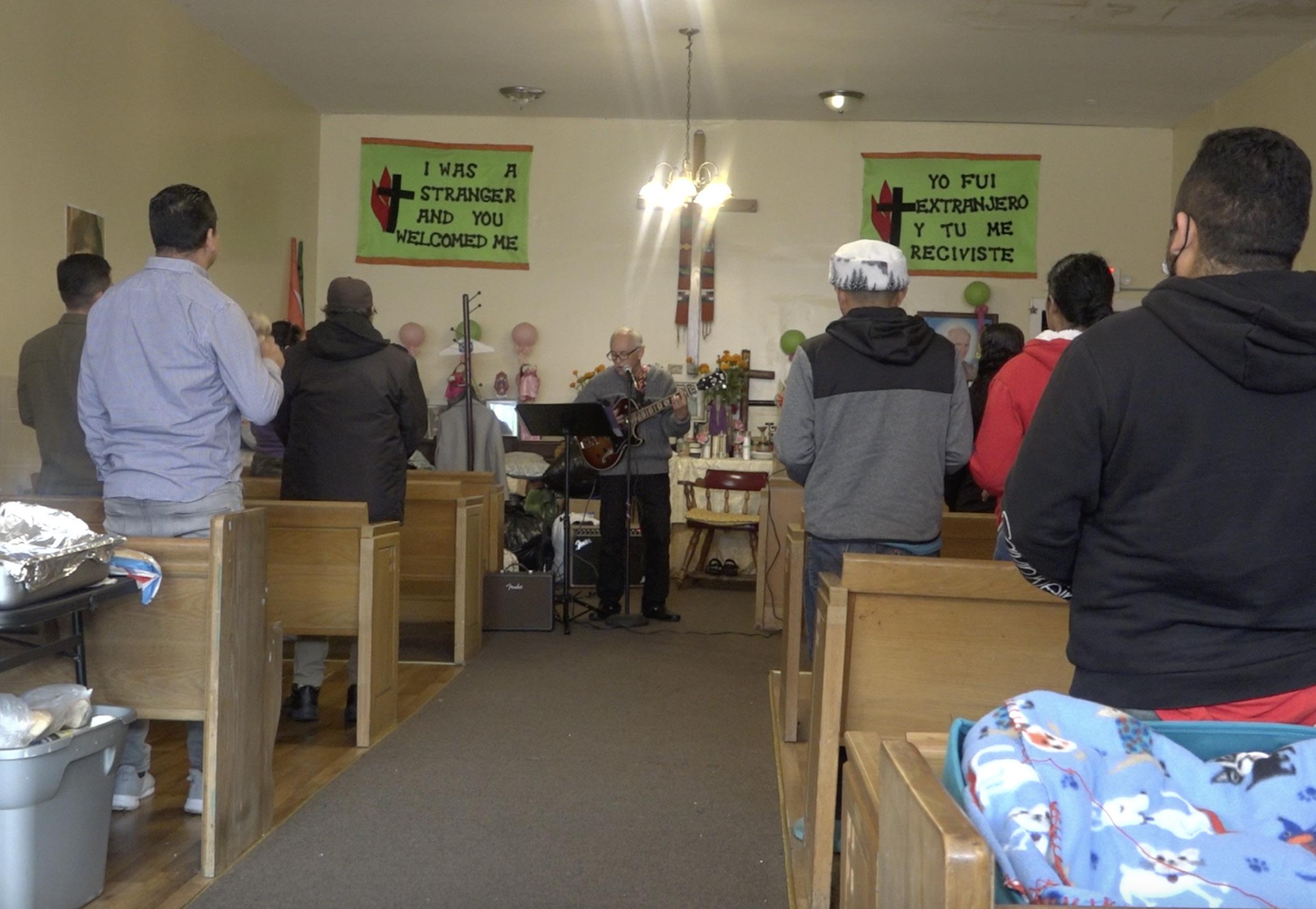
Whether on the front lines or not, the mobilization of many Latinos across the city to support those arriving come in various forms.
Emily Vallejo, daughter of Peruvian immigrants and student at DePaul, started a clothing drive for migrants through the Latinx cultural group known as MESA.
She said her parents and grandparents immigration story has fueled her activism.
“It’s always kinda been a big part of why I felt like I need to do things is because I see my family in other people,” Vallejo said.
Vallejo said she wants to give back to her community such as the incoming migrants because her family paved the way for her to do so.
“I feel like it would almost be doing a disservice to my family if I weren’t saying this is messed up or we should be mobilizing.”
Vallejo said many of the older generation of Latinos focused on ‘surviving’ in the United States, rather than engaging in forms of activism.
These acts of survival were often sending money back to their families or simply ensuring there was food on the table.
As migrants continue to arrive, Briseño said all she wants is to be granted permission by the U.S. government to work. She wishes to provide for her family, especially her daughter.

“She is my strength to keep fighting.”

 By Siona ChiBBer Contributing Writer
By Siona ChiBBer Contributing Writer
Elon Musk, the CEO of Tesla, began the acquisition of Twitter on April 14, 2022. When the news first broke, many people were shocked and apprehensive about this change in leadership. Ideas surrounding censorship and hate speech are being debated. An app that has been around for over a decade is beginning to crumble.

In the past few weeks, there has been an uproar online due to drastic changes that have been made on Twitter. An increase in hate speech, banning parody accounts, having to pay about $8 for verification and even employees being needlessly fired have all contributed to Twitter’s decline after Musk acquired ownership.
Slurs have made quite the appearance as well. In October alone, the use of the “n” slur increased nearly 500% from the previous average, since Musk decided to loosen restrictions on the app in terms of language.
He believes the app should have more leniency in terms of free speech.
accessible on online platforms, but digital boundaries need to be put in place and enforced to avoid harassment and violence.”
With the exponential increase of younger viewers on platforms originally intended for older audiences, some degree of censorship should be applied to avoid backlash or lawsuits. This should be prioritized especially when there have already been previous incidents online where something was posted uncensored and caused a scene on other popular apps. For instance, there was a recent shooting in Memphis a few months ago which was posted to Facebook live and not taken down immediately. This caused outrage by users and resulted in legal trouble.
DePaul SAIC studentSam Moilanen, opinions editor at The DePaulia was permanently banned last Monday for simply sharing her story regarding health insurance. Her post was not offensive in nature but was still taken down nonetheless.
This behavior is contrary to what Musk originally claimed when sharing his goals for Twitter a few months ago.
ship and wants to allow a space for all users to freely speak, yet many are being silenced despite his statement, proving Musk’s intentions with this platform are inconsistent and hypocritical.
Tweets that may need to be flagged or censored will go untouched, and those speaking out against injustices or sharing their truths will be silenced. This control over one of social media’s most commonly used platforms completely changes the dynamic for social media users.
“I think that social media apps need to draw a line with freedom of speech,” Ana Esquivel, a Design Arts at DePaul said. “I understand sharing your opinions and finding like minded people, but once you start attempting to change people’s minds in a negative way or by forcing your thoughts onto people, that’s when something should be done to stop it.”
@ELONMUSK| TWITTERthat is widely used by people all over the world is a recipe for disaster. The inconsistencies, miscommunication and fake news this is creating is destroying the app from within.
A sense of community on a platform such as this one begins to dissolve when people with inappropriate and radical ideas have the liberty to post such grotesque remarks on an app open to the public. This obliterates Twitter’s credibility as well as Elon Musk.
“I wouldn’t want to be associated with the app anymore if it continues to go this direction,” Esquivel said.
With this becoming a bigger issue everyday, it sets a new precedent for social media apps. It opens up conversations about the levels of free speech and creative control on these influential platforms. It’s Twitter now, what’s next, TikTok? This is going to alter online etiquette on every popular app.
“There needs to be a line that’s drawn,” Jenni Sitompul, an interdisciplinary artist and current student at SAIC said. “We need a group of people fact checking tweets. I do agree that a certain level of free speech should be
In a tweet, Musk said, “free speech is the bedrock of a functioning democracy, and Twitter is the digital town square where matters vital to the future of humanity are debated.”
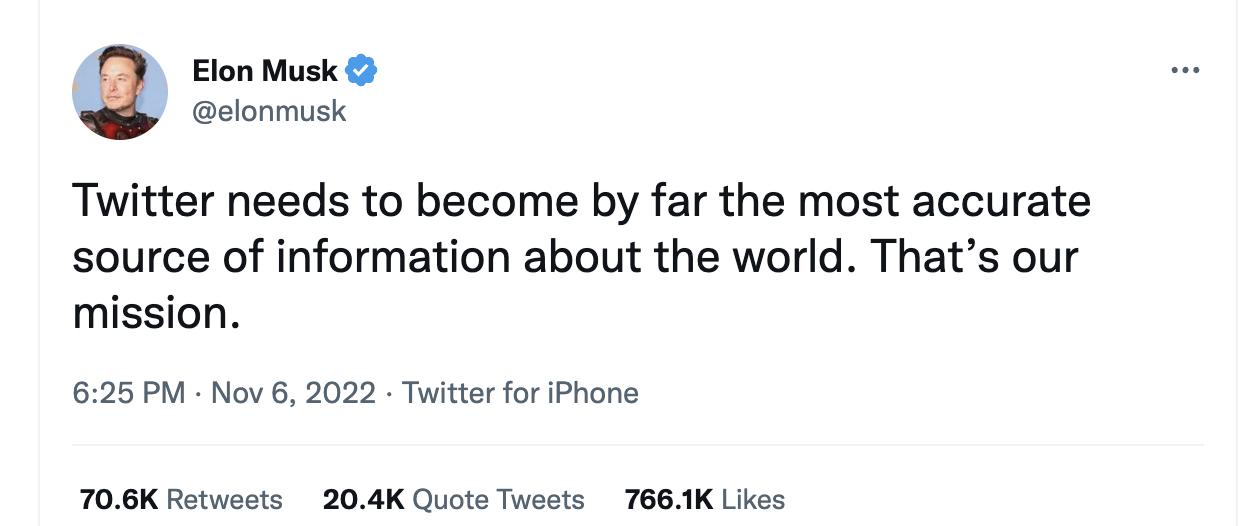
Musk claims he is against censor-
His rules for the platform have become specific, versatile and incoherent. Musk’s ideas are constantly changing depending on his personal feelings in relation to the person or tweet. This type of exclusive behavior towards an app
Jenni SitompulERIK UEBELACKER | THE DEPAULIA
As excited as I am for the start of winter break, I cannot help but dread my next quarter at DePaul. It isn’t the usual not wanting to go back to school feeling, it’s something that feels much worse.
The Jan. 2 start date is a ticking time bomb for a COVID-19 crisis at DePaul.
During the holiday season last year, the Omicron variant caused COVID cases to spike to an all-time high. DePaul recognized this risk and held the first two weeks of winter quarter 2022 online “in the spirit of caring for others and Take Care DePaul,” the university wrote in an announcement.
I hope that our new leadership continues to keep those values in mind as we approach January. While it remains to be seen whether or not a new variant will resurface, attitudes about COVID are much different at DePaul than they were just one year ago and I’m worried those differences will create an environment for COVID to thrive and spread.
In August, DePaul announced that while it would still require vaccination against COVID, it would discontinue on-campus PCR testing, distribution of free KN95 masks and mandatory weekly testing for unvaccinated students.
It is unclear how these changes have impacted the DePaul community because the university stopped reporting the number of positive COVID cases on campus. It also discontinued COVID tracing for people who may have been in close contact with someone who tested positive.
It would seem like these measures would increase the risk of COVID spread, but without university data, we can never know for sure. All I know is that people are still contracting the virus whether the university reports it or not.
I tested positive just a few weeks ago after coming back from a journalism conference in Washington D.C. I don’t know whether I contracted the virus from DePaul before I went, or whether I was exposed in D.C.
This is the risk that we are all facing coming back to a mask-optional campus on Jan. 2. There is no way to know when we have been exposed or who exposed us unless we are explicitly notified.
The situation gets even murkier because we are coming back to school so early after the holiday season and new year celebrations. I know some
DePaul community members will come back to Chicago after traveling during winter break. They may have to ride buses, trains and planes with complete strangers for extended periods, risking potential exposure.
Those who are not traveling may have spent winter break with family and friends, which is still a risk for exposure.
The risks of COVID go beyond physical health. If you test positive for the virus, you are required to isolate yourself for at least five days before going out into the community. If you still have symptoms after five days, you are required to isolate even longer.
This impacts people who have to work or attend classes in person.
Isolating for five days and missing one week of classes when we only have 10 weeks in the quarter is detrimental. Last school year, I was sick with COVID for two weeks and I was struggling to catch up in my classes while I was stuck in isolation.
In addition to being sick, I was burnt out, tired and hopeless that I could even recover from COVID. I barely had any willpower to do the assignments that were piling up as the classes moved ahead without me. I was tired of pushing myself and thought about withdrawing from the quarter.
When I contracted COVID the second time, these feelings were not any different. I don’t want that to happen again. I don’t want to get COVID again.
As we come back to school for winter quarter, we are going into classrooms not knowing whether our classmates have been exposed to COVID, yet DePaul has not made any announcements about mitigating this risk. Last year, DePaul required all students to get a COVID-19 booster shot. The university has not given an official statement about whether it will require the bivalent COVID-19 booster shot that came out this summer.
Even though new positive cases may have been decreasing nationally, the situation is still dire. According to the CDC, COVID is the third leading cause of death in this country right now, solidifying the pandemic as an ongoing national crisis.
Health precautions like wearing a mask, socially distancing and even vaccinating yourself against COVID are all now considered personal choices. Even though mask-wearing helps reduce the spread, I rarely see any masks when I am out in public. So often, I am one
Lincoln Park Campus Office of Health Promotion and Wellness (Located in the Student Center) 2250 N Sheffield Suite 302
Loop Campus Student Affairs Office (Located in the Lewis Center) 25 E. Jackson Blvd Suite 1400
of the only people wearing a mask on a crowded train or bus, in the classroom and at work.
Every day when I put on my mask, I remember my family member who died from COVID. I remember my immunocompromised mother and brother. I remember that even if you recover from the virus, you can still have long-term effects which we don’t even know the true extent of.
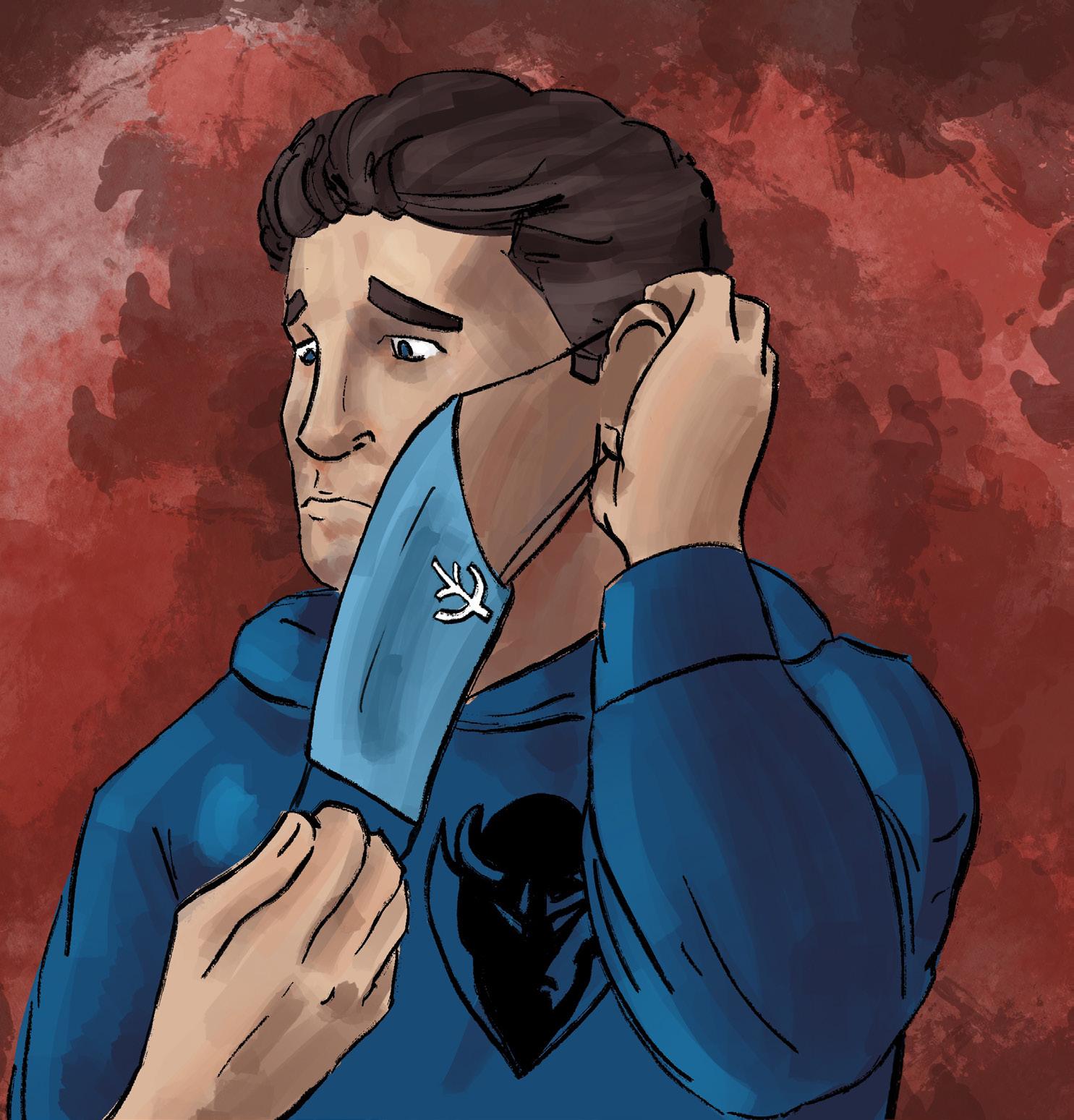
COVID is a public health crisis that impacts communities, not just individuals. Our individual decisions regarding the pandemic impact everyone we are in contact with.
If or when you contract COVID, you are risking spreading the virus to everyone you work with, everyone in your classes and everyone you sit next to on public transportation. Not to mention that this spread is more likely to happen if you are not wearing a mask.
Individual decisions are important, but institutions need to take responsibility as well. The CDC, the City of Chicago and DePaul University are failing the communities they are supposed to protect. Our institutions have told us that it is okay to fall back and walk when we need to be sprinting.
DePaul had one of the strongest responses to COVID at the beginning of the pandemic, and now I can’t help but feel like the university is moving on from a pandemic that is still ongoing.
Coming back to school on Jan. 2 without masks or COVID tracing is a
It takes a lot to make a cowboy cry, but the results of Texas’ midterm election might be enough to do it. Gov. Greg Abbott’s win against Democratic gubernatorial nominee Beto O’Rourke means Texas has been under a Republican governor for over 20 years, and shows no promising signs of change.
The election loss of O’Rourke is no longer simply a liberal versus conservative problem. Instead, these issues pose a greater threat, with Texas exemplifying the failure of an ineffective democracy plaguing the nation.
During Abbott’s time in office, gunman Salvador Ramos killed 19 children and two adults at Robb Elementary School in Texas’ deadliest school shooting. Ramos legally purchased the AR rifle along with 375 rounds of ammunition days after his 18th birthday. While families mourned and communities lay divided, turning the issue of mass murder into a debate on the Second Amendment, Abbott went to a fundraising event for his campaign, raising roughly $50,000 in three hours.
If we cannot depend on our local politicians during times of tragedy, we have nothing but empty promises and broken trust. There is even less excuse for Abbott’s actions on a local scale, meaning voters justifying these choices is worrying on a much deeper level than political ideology. If we refuse to hold elected officials accountable for the consequences of the laws they will or will not enact, what is the point of democracy?
Despite data trends showing a majority of Texans vote before election day, only 31% of voters followed through for this race, even with the competitive and controversial nature of Abbott versus O’Rourke. The disparity between registered voters and voter turnout is nothing new, but when candidates like O’Rourke face election losses because of their target demographics’ inability to actually go to the polls, there is no opportunity for growth.
According to various studies by Tufts on voter turnout, for people ages 18 to 29 in the 2020 presidential election, Texas saw 41% compared to Illinois’ 46% rating. Neither are at satisfactory levels, but those with higher success rates like Illinois have a duty to encourage other states to match them, advocating for increased voter rates as a whole. Without citizens utilizing their full governmental power, there is no realistic way to have a ballot of leaders who accurately represent its people.
The red political blanket covering Texas is the same shade of blood as the innocent people who have died because of our officials’ inept policies. Allowing Abbott to win even after the various controversies during his terms, we open politics to inadequate governing by ignoring needless tragedy and low voter turnout. Instead of looking at Texas as another lost cause, a state doomed to the woes of conservative extremists, it should instead be viewed as a place for heightend encouragement and focused political attention.
Just because a state’s elections do not appear to impact you directly, distanced by miles or apathy, does not mean it does not hold power in the House of Representatives or the Senate. Laws affect much more than just the people within carefully drawn boundaries, and change begins when an individual uses their power alongside the support of a whole. Politics is not an us versus them issue, but rather a way to unite and uplift within the social contract we ourselves designed.


Cindy Cooper worked to collect the community’s votes at the Lincoln Park Public Library for 17 days straight. In late October to early November. Her team was among the 775,101 nationwide poll workers in the 2020 election coming back as retired, now unpaid Chicago employees. “Let’s face it, we’re Chicago employees. We don’t get paid,” Cooper said. “But we do it because it’s that important, we are like a part of this neighborhood.”
Cooper describes the Lincoln Park CPL location as not a normal polling place. Community members send her team plants, pizza and encouraging emails as this is ingrained into the neighborhood.
“If you’re a first-time voter, we’re going to embarrass you. If it’s your birthday, we’re going to embarrass you,” she said. “I know it’s supposed to be a serious thing, but if you’re standing in line for three hours you gotta lighten it up.”

Being across the street from DePaul, Cooper notices the influx of students turning in ballots close to election day.
“Yesterday we did 100 new registrations, just at this location,” Cooper said. “I will guarantee you, about 60% of them were DePaul students.”
Many DePaul students had the opportunity to vote for the first time in this election.
“I think that no matter what, for anybody who can vote, they should take that opportunity,” Maysoon Kadiri, a sophomore at DePaul and first-time voter said. “I think it’s really important because we determine what happens in the future and we’re the ones that are going to be involved in whatever is decided.”
According to NPR, researchers say that the 2022 election had
There was a larger turnout,” Adjunct professor R. Craig Sautter said. “Certainly there was a larger turnout where abortion was on the ballot. In general, it probably motivated people.”
Cooper said her polling site saw a good student turnout out on election day, but she was not satisfied with the number of students that were early voting.
“We have been here for two and a half weeks, I don’t think we have seen enough of them,” Cooper said.
While a ballot cast on election day is the same as an early vote, being proactive by planning a trip to
the polls a few days early counteracts any possible last-minute plan changes or other personal factors that could delay a vote being cast.
In addition to early voting, Cooper also urges voters to make sure to come prepared.
“The most important thing is to go to the Chicago Board of Elections website and look at a sample ballot,” Cooper said. “Make a decision, do you want to do just the governor and the senate seats, or do you want to delve deep enough to do the judges? There are so many great places to get that information.”

Kadiri agrees with Cooper and
believes that a large factor that stops youths from voting is a lack of education about the election.

“I think that there is a big gap between what people do know and what people don’t know about who is on the ballot,” Kadiri said.
“I think this midterm for me is an opportunity for everyone to show the representation that they want.”
Nonetheless, many youth voters recognized this election as their opportunity to make the voices of their generation heard.
“I think that it’s really important, just to have that voice,” EJ Bradford, junior at DePaul and absentee voter said.
 Source: Data from Center for Information & Research on Civic Learning and Engagement (CIRCLE).
Source: Data from Center for Information & Research on Civic Learning and Engagement (CIRCLE).
Youth voters made a large dent in the previously anticipated ‘red wave’. At Arizona State University, 96% of students voted for Democratic candidate for governor Katie Hobbs, whereas 4% voted for Republican candidate Kari Lake according to PoliticsVerse.


As for the Republicans, this election did not turn out how they had hoped or expected. Historically speaking, the midterms usually lean in favor of the party that doesn’t hold the presidency.
“I think young people disproportionately go Democratic. Old people are going, right now, disproportionately Republican,” Steger said.
Republicans failed to gain many majority seats, historically underperforming. According to the Washington Post, this will be the first time since 1986 and the second time since 1934 that the opposition party has had a net loss of governor’s seats.
“I suspect that the reason that they did this way is Trump’s visibility for Republicans and Democrats,” Steger said.

A higher youth voter turnout was seen in the Latino community, as well.
“For Latino voters, 50% of Latino voters that early voted were urban voters,” Joe Tafoya, professor of political science at DePaul said. “That tells us that they’re typically younger, they’re second or third generation… we saw a spike in




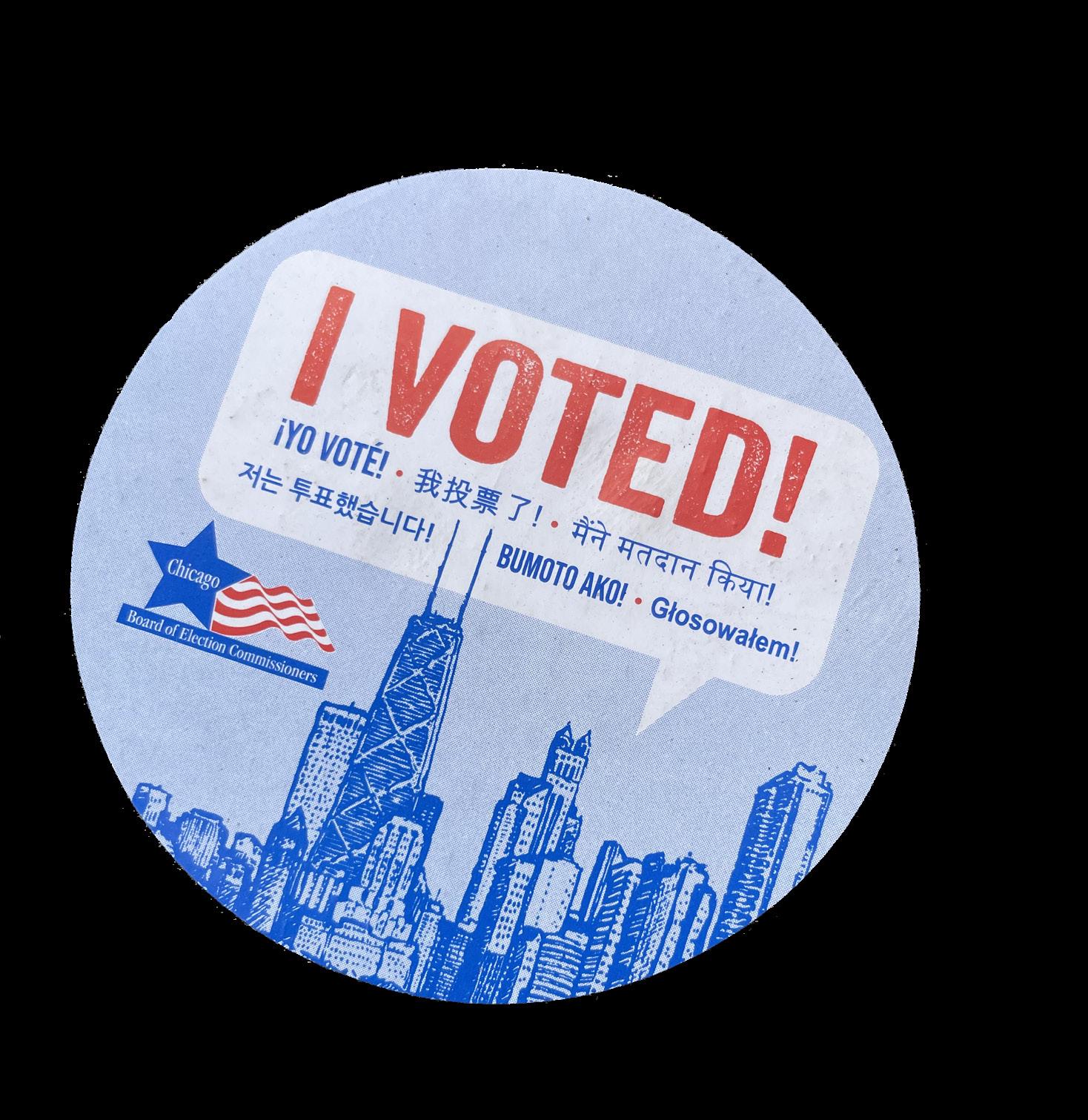

young Latino men who voted.”
According to The Washington Post, voter turnout was especial ly high for a midterm in several battleground states, where expec tations of a close contest boosted voter participation. In Wisconsin and Michigan, nearly 6 out of 10 eligible voters casted a ballot.
Illinois voters solidified Dem ocrat J.B. Pritzker as the governor against Republican Darren Bailey. Nationally, The House looks set to flip to the Republicans.
Democrats will keep control of the Senate, NBC News projects holding at least 50 seats.
“Voting is such an important power that people can use to uplift others and uplift your values,”
EJ Bradford DePaul junior
Yumary Briseño miró a su hija de 12 años. Sus tiernos ojos mirándola, llenos de preocupación.
“Mamá, tengo hambre.”
Briseño le dio a su hija la única comida que tenía en casa: unas arepas de harina y una lata de salsa de tomate.
“Mamá, eso no es comida”.
Conteniendo las lágrimas, Briseño se dio cuenta de que era hora de huir de Venezuela.
Briseño dijo que no quería venir a los Estados Unidos, pero con la creciente crisis económica en su país de origen, decidió huir con la esperanza de brindarle una vida mejor a su hija y a su madre.
Su negocio de restaurante en Venezuela estaba en declive y no tuvo éxito en encontrar otro trabajo que le pagara lo suficiente para mantener a su familia.
“Tenía que hacerlo”, dijo.
El viaje de Briseño a los Estados Unidos no fue fácil. Encontró miedo, hambre y fatiga. Vio a mujeres y hombres violados con sus propios ojos. Vio cómo asaltaban y disparaban a inmigrantes.
Ella fue testigo del aumento de la frustración entre otros migrantes durante su viaje de un mes, muchos de ellos peleando entre sí por el agua.
“Si pudiera retroceder el tiempo, lo reconsideraría un millón de veces antes de emprender el viaje”, dijo Briseño.
A menudo, se iba a dormir a la calle con miedo de que la mataran.
“Es una experiencia que no le deseo a nadie”, dijo.
Desde finales de agosto, el gobernador republicano, Greg Abbott, ha enviado en autobús a unos 3.700 inmigrantes a Chicago
desde la frontera entre Estados Unidos y México, en Texas. Al menos 425 son niños en edad escolar, según ChalkBeat.
La mayoría de los inmigrantes buscan asilo, pero algunos ni siquiera saben que llegaron a Chicago en primer lugar.
La afluencia de inmigrantes indocumentados es parte del plan de Abbott para enviarlos a ciudades ‘santuario’ demócratas.
Abbott ha criticado abiertamente en redes sociales el intento de la administración Biden de levantar el Título 42, una ley federal, autorizada antes del envío de migrantes, que permite negar el asilo a los solicitantes en los EE. UU. durante la pandemia de Covid-19.
A pesar de sus experiencias, Briseño dijo que fue una de las afortunadas.
Su viaje la llevó a pasar tres días en el Centro de Recursos para Migrantes en San Antonio, Texas, donde una mujer del centro le dio boletos de avión a Chicago.

Al llegar a la ciudad se encontró con los pastores Jacobita Cortes y Elvira, quien no quiso revelar su apellido.
Elvira y Cortes convirtieron la Iglesia Metodista Unida Adalberto Memorial, en Humboldt Park, en un santuario para los inmigrantes que lleguen.
Les proporcionan alojamiento, ropa, comida y educación sobre cómo usar el transporte público.
Cortes dijo que la iglesia ha recibido alrededor de 150 inmigrantes. Su objetivo ha sido ayudarlos a encontrar trabajo, apartamentos; pero, sobre todo, ayudarlos a restaurar su fé y sus derechos humanos.
Durante una misa en la iglesia, Elvira contó su experiencia como indocumentada a los recién llegados.
Giró la cabeza, reconociendo los ojos de todos en la pequeña habitación y dijo: “Hoy, todos ustedes están llegando al paraíso. Pero un paraíso, ¿por qué? Porque otros antes de nosotros, incluso mucho antes que yo, lucharon para que en ese tiempo yo pudiera tener derechos”.
Elvira fue deportada de Estados Unidos en 2007 y no se le permitió ingresar al país durante veinte años. A pesar de su condición de indocumentada, viajaba a la frontera de EE. UU. con México y ayudaba a la gente a
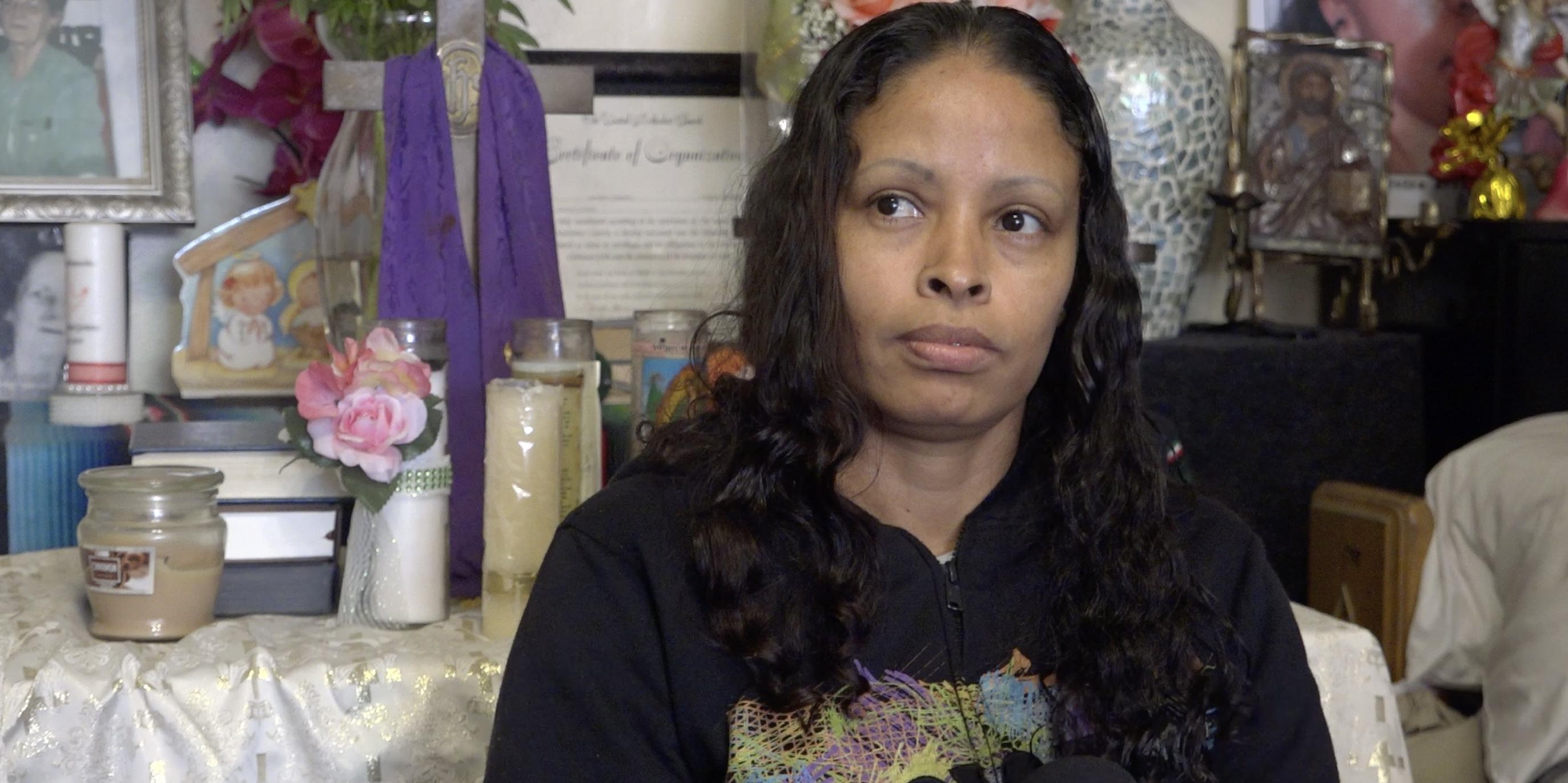
cruzar.
Hubo momentos en que miró hacia el cielo y pensó: “Señor, pero ¿qué estoy haciendo aquí?”
Elvira dijo que, aunque había días en los que estaba llena de dudas y miedo de que la penalizaran nuevamente, quería ayudar a las personas a crear una vida mejor en los EE.UU.
“Quería que ninguna otra madre y padre se separaran de sus hijos. Para que ningún otro padre y madre sean avergonzados. Que ningún otro trabajador se avergüence por el simple hecho
de querer trabajar”.
Les recordó a los migrantes que su camino no será fácil, sin embargo, deben seguir luchando.
Cortés dijo recordarles siempre que a pesar de la crisis de su país, no deben soltar sus raíces.
“Como les digo a nuestros hermanos venezolanos, nunca olviden ni sientan vergüenza de su pueblo, de su país”, dijo Cortes.
Cortes también fue migrante. Llegó a los Estados Unidos a los 17 años desde Michoacán, México. Dijo que ahora es deber de las personas que comparten experiencias migratorias similares ayudar a los nuevos migrantes.
Su mensaje trasciende por las paredes de la iglesia a través de dos carteles verdes, uno en español y otro en inglés que dicen: “Yo fui extranjero y tú me recibiste”.
“Así como llegaron, pueden tener ese corazón para seguir ayudando a los demás. Para no olvidar a los que quedaron atrás”, dijo Cortes.
A través de una experiencia migratoria similar o de su propio sentido de vocación, muchos latinos en todo Chicago han encontrado sus propias formas de ayudar a quienes buscan asilo.
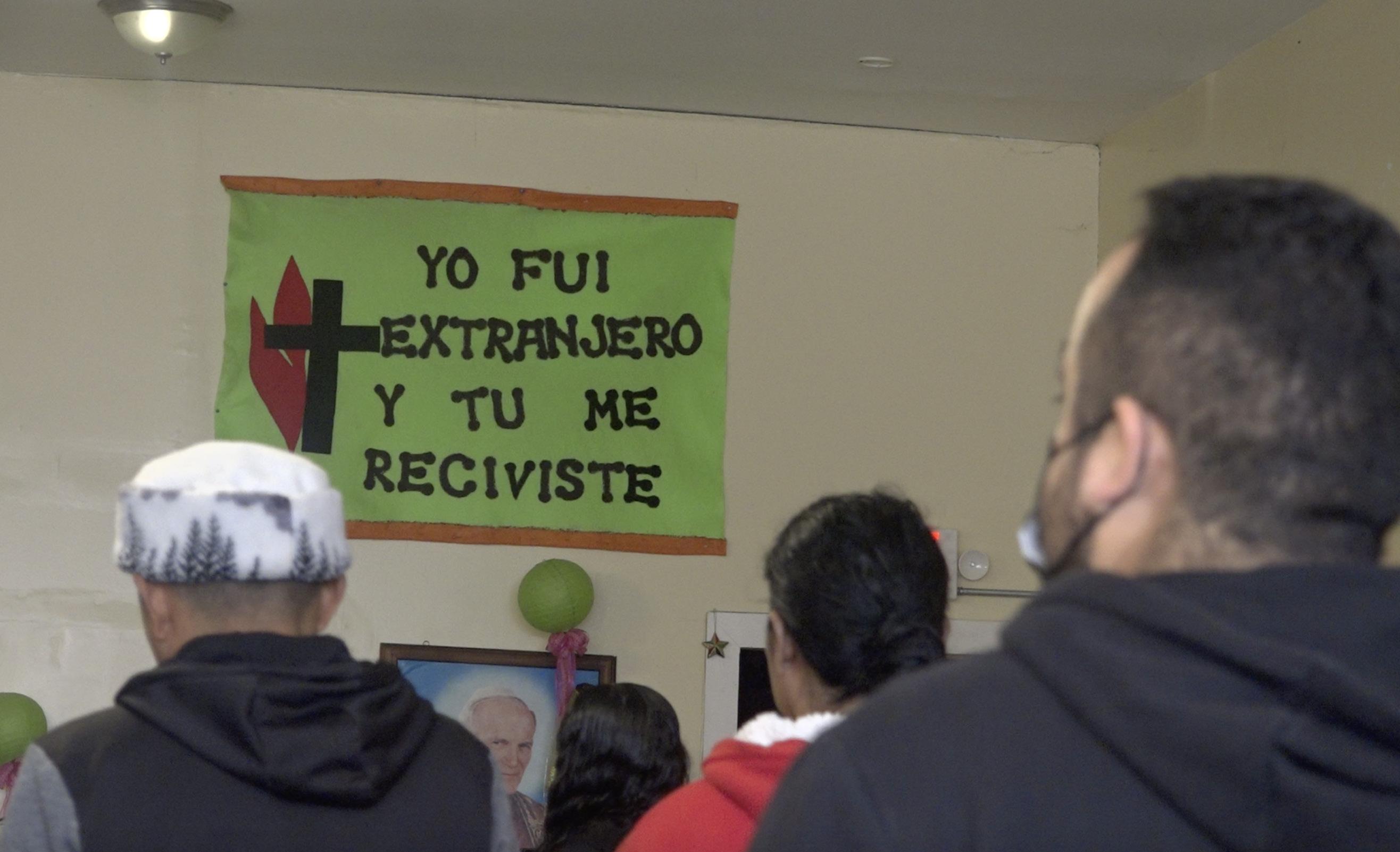
Baltazar Enríquez, presidente del Consejo Comunitario de La Villita (LVCC, por sus siglas en inglés) estuvo en Union Station el 31 de agosto, la noche cuando llegó el primer autobús de migrantes a Chicago.
Recibió una llamada del camarógrafo de Univision, Enrique García Fuentes, preguntándole si podían usar el espacio del pasillo de LVCC para albergar a los migrantes. Aunque Enríquez estuvo de acuerdo, no se dio cuenta de la cantidad ‘masiva’ de personas que buscaban asilo.
Los voluntarios de LVCC reunieron rápidamente suministros como ropa, mantas, comida y transporte. Enríquez pidió ayuda a los funcionarios de la ciudad, incluido el congresista Chuy García, el líder del Caucus Latino de Illinois, Aaron Ortiz, y la comisionada del condado de Cook, Alma Anaya. Enrique dijo que ninguno de ellos respondió a sus llamadas telefónicas, ni lo llamó más tarde.
“La ciudad no nos ha ayudado con nada. El estado no nos ha ayudado con nada. El condado nos ha ayudado pero nada. El gobierno federal no nos ha ayudado en nada”.
En octubre, la alcaldesa Lightfoot donó $5 millones a la ciudad para apoyar a los inmigrantes que llegan, según la Revista Bloomberg. Sin embargo, la LVCC no contó con ningún apoyo financiero de la ciudad, según Enríquez.
Enríquez dijo que el vecindario de La Villita siempre da la bienvenida a los inmigrantes. Como parte de una de las comunidades mexicanas más grandes de la ciudad, él dice que siempre “dan una mano amiga”.
Ya sea en la línea del frente o no, la
movilización de muchos latinos en toda la ciudad para apoyar a los que llegan se presenta de diversas formas.
Emily Vallejo, hija de inmigrantes peruanos y estudiante de DePaul, inició una colecta de ropa para migrantes a través del grupo cultural Latinx conocido como MESA.
Ella dijo que la historia de inmigración de sus padres y abuelos han impulsado su activismo.
“Siempre ha sido una gran parte del por qué sentí que necesito hacer estas cosas, porque veo a mi familia en otras personas”, dijo Vallejo.
Vallejo dijo que muchos de los latinos de la generación anterior se centraron en ‘sobrevivir’ en los Estados Unidos, en lugar de participar en formas de activismo. Estos actos de supervivencia a menudo consistían en enviar dinero a sus familias o simplemente asegurarse de que hubiera comida en la mesa.
“Cuando miras a una generación diferente de latinos, tiendes a ver que a todos les gusta mantener la cabeza agachada”.
Vallejo dijo que quiere retribuir a su comunidad, como a los inmigrantes entrantes, porque su familia le allanó el camino para hacerlo.
“Siento que casi estaría perjudicando a mi familia si no dijera que esto está mal o que deberíamos movilizarnos”.
A medida que continúan llegando migrantes, Briseño dijo que todo lo que quiere es que el gobierno de los Estados Unidos le otorgue el permiso para trabajar. Ella desea mantener a su familia, especialmente a su hija.
“Ella es mi fuerza para seguir luchando”.

The event did not start until 2 p.m., but that didn’t stop students from sitting in a line going from the quad to the front gate of the quad then wrapping back on the sidewalk all around the SAC to Kenmore Ave.
By the time 2 p.m. rolled around, the line was at the front of the Richardson Library but on the Kenmore side, not the quad.
Only 1,250 sweaters were passed out. This year, the design was a dark blue with white text, the same design as last year but different colors.
Students like senior Julianna De Leon waited in line since 12:30 p.m.
She said she was waiting so she could get the final sweater in her collection of DePaul ugly sweaters.
“I was in class on Zoom waiting in the line,” De Leon said. “And I had a one on one meeting over zoom on the phone and ate.
So I've been doing everything in this line waiting since 12:30p.m. I think [the people at the front of the line have] been waiting since like 11:15 in the morning.

So that stands that sets the standards.”
While De Leon was able to do her work in the quad while she waited, many students skipped their classes or even left classes early so they could get a sweater.
Some professors ended classes early so students could get in line.
Once students finally got their hands on a sweater, they were sent into a winter wonderland hosted by the Office of Student Involvement (OSI) in the quad. There was an inflatable snow globe, mini donuts, inflatable races and obstacle courses, holiday stuff-a-plush tables, tables for writing letters to children in local hospitals, s’mores and Christmas music blasting so loud you could hear it by McGrath-Phillips Arena.
At 4 p.m. students lined up yet again but this time at the entrance of the Vinny Circle in the quad.
The first 750 students to attend the tree lighting ceremony in the Vinny Circle were given a DePaul scarf, which matched the design of the beanie that was handed out last year.

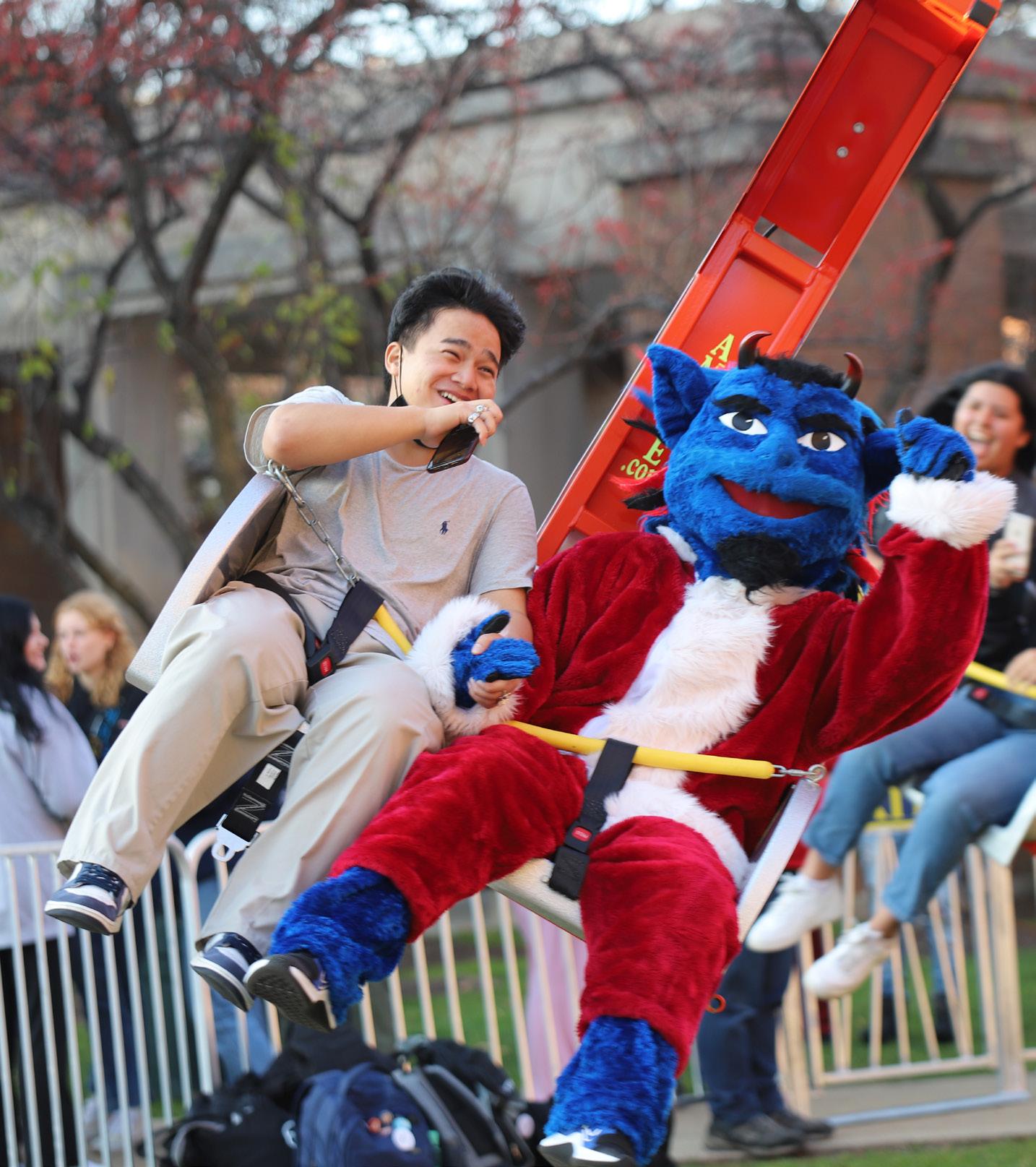
As 4:30 p.m. rolled around and to kick off the ceremony, Dibs and the DePaul University Dance Team ran onto the stage and performed.
Robbyn Simone, a sophomore in The
 QUENTIN BLAIS| THE DEPAULIA
QUENTIN BLAIS| THE DEPAULIA
Theatre School, Kevin Holechko, Student Government Association president and senior and DePaul President Robert L. Manuel all spoke at the event.
They shared stories of their family traditions around the holidays, gave blessings to people and their families and even discussed the meaning of the tree lighting.
Manuel said the tree in the Vinny Circle is turned on before students depart for winter break and will be on when they come back to campus so they know they are home.
While the event is fun for students and many are willing to take the chance to get anything free from DePaul, students like freshman Peyton Luedtke do think there are two sides to the coin.
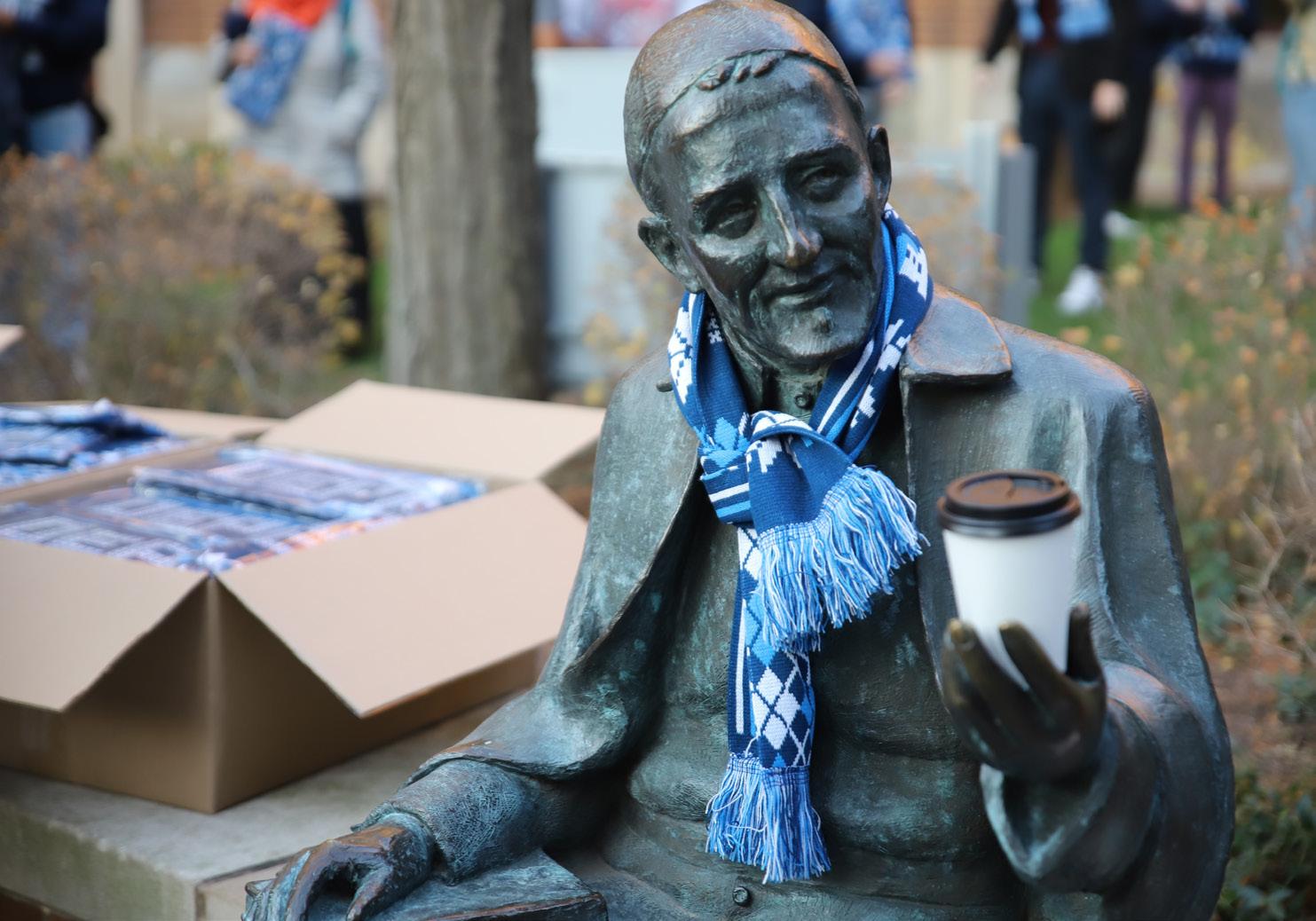
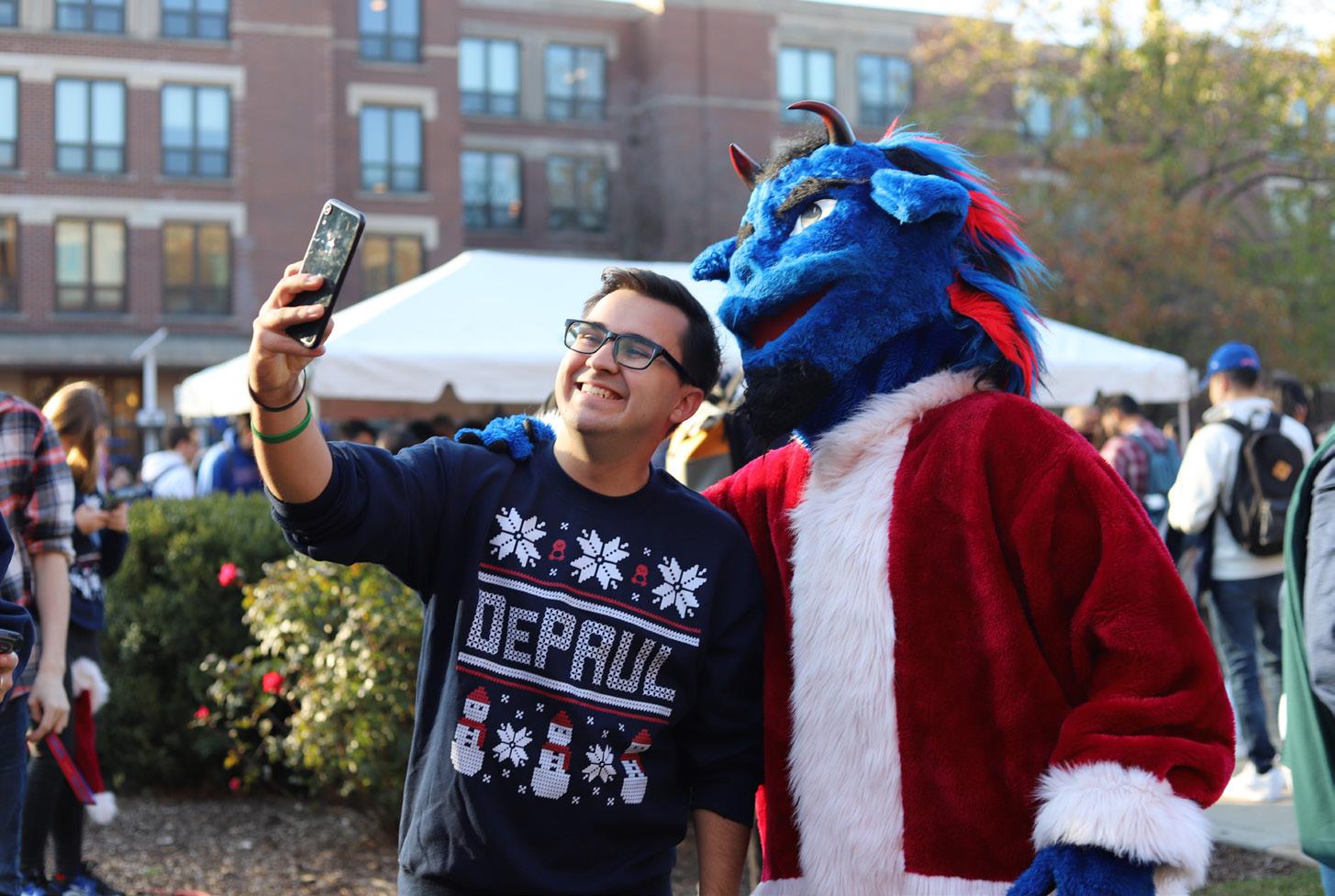
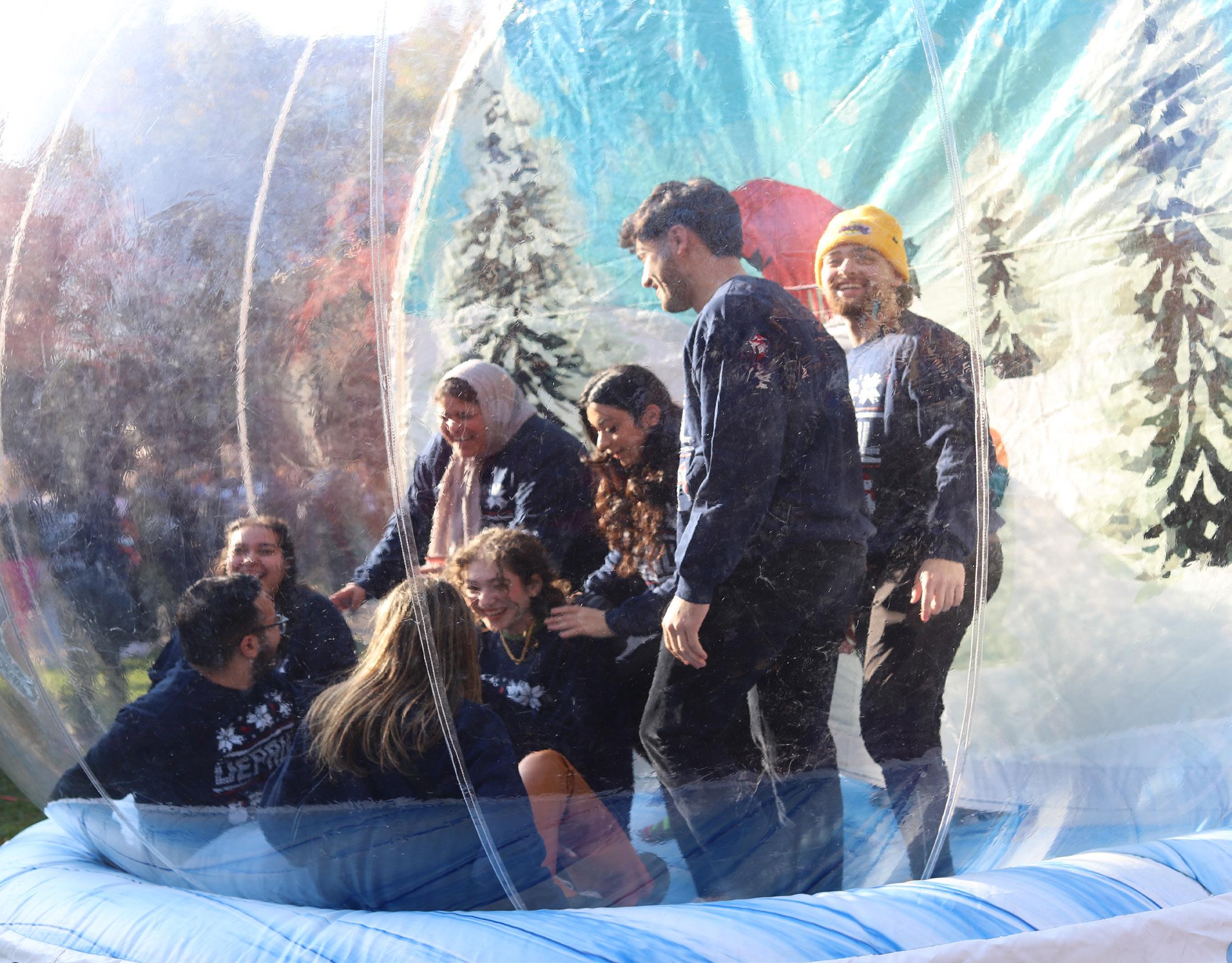
“On the bright side [this event is] a good opportunity for everyone to celebrate,” Luedtke said. “But on the downside it's like people who don't celebrate Christmas don’t get as much recognition for their holidays.”

Luedtke and freshman Zoe Holm agreed that an event geared towards learning about other faiths would be representative.
Luedtke even suggested having a holiday fair so anyone of any faith could be represented.
“I think it'd be a really good idea to start posting bigger events for other faiths,” freshman MJ Fitzpatrick said. “Because it's not only there for them, it's also for other people to come and learn about their faith. You don't have to believe in that faith to learn about it and attend events about it.”
Junior Meral Fidai said there is already opportunity for these events to be a thing because student organizations of different heritages and faiths continuously host these events but on a smaller scale every year.
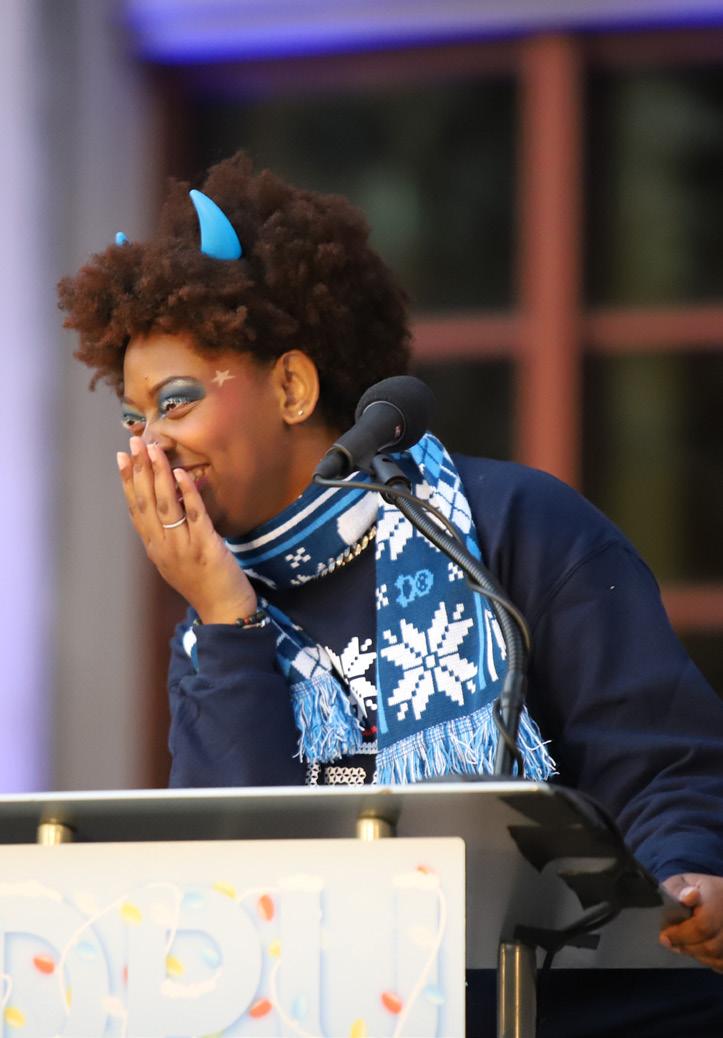
“So if you go in the [Student Center], there's like a little TV and they have all the events that different clubs are doing,” Fidai said.
“So, specifically for the South Asian holidays and clubs, they put them up on the board, but they don't actually advertise them to anyone else but the people in the club. So I think if we started advertising them for the general body, it would be a lot better.”
To promote interfaith and more representation regarding faiths aside from Catholicism, De Leon said OSI should consider making different designs for the ugly sweater every year.
“I think it would be really cool to have different student organizations, offices and students, but like their type of input on what the free ugly sweater is going to be so that we can all feel represented,” De Leon said. “Or maybe just change up the theme every year. So instead of it being like a free, ugly sweater, a free holiday sweater or a free different type of sweater so that we can kind of experiment with different designs and different inputs and different ways to represent.”
For students, faculty and staff who did not get the opportunity to get a sweater on the day of the Ugly Sweater Party, DePaul is currently hosting a fundraiser where people can buy a sweater for $35 and the money will go towards the Basic Needs Hub. The fundraiser is open until Nov. 16.
 KIERSTEN RIEDFORD | THE DEPAULIA
Ugly DePaul-themed sweaters were distributed to the first 1250 students in line at the event on Wednesday, from 2 p.m. to 7 p.m.
Kevin Holechko poses for a selfie with DIBS who came dressed as Santa Claus.
Robbyn Simone, a sophomore speaks at the tree lighting ceremony.
KIERSTEN RIEDFORD | THE DEPAULIA
KIERSTEN RIEDFORD | THE DEPAULIA
The statue of St. Vincent DePaul in the quad decked in a holiday scarf.
KIERSTEN RIEDFORD | THE DEPAULIA
KIERSTEN RIEDFORD | THE DEPAULIA
Ugly DePaul-themed sweaters were distributed to the first 1250 students in line at the event on Wednesday, from 2 p.m. to 7 p.m.
Kevin Holechko poses for a selfie with DIBS who came dressed as Santa Claus.
Robbyn Simone, a sophomore speaks at the tree lighting ceremony.
KIERSTEN RIEDFORD | THE DEPAULIA
KIERSTEN RIEDFORD | THE DEPAULIA
The statue of St. Vincent DePaul in the quad decked in a holiday scarf.
KIERSTEN RIEDFORD | THE DEPAULIA
When the Field Museum opened its original Native American exhibit in the late 1950s, the only Indigenous peoples invited to participate were those asked to perform. Now, nearly seven decades later, this natural history museum is finally confronting its past.
After five years of tireless work, "Native Truths: Our Voices, Our Stories" opened to the public in May, uplifting the voices and experiences of Native Americans from over 100 different nations, spanning across the United States and Canada.

In honor of Native American Heritage month, DePaul University hosted Dr. Doug Kiel, a member of the Oneida Nation and professor at Northwestern University, and Field Museum exhibit developer Ryan Schuessler to discuss the significance of the updated exhibition.
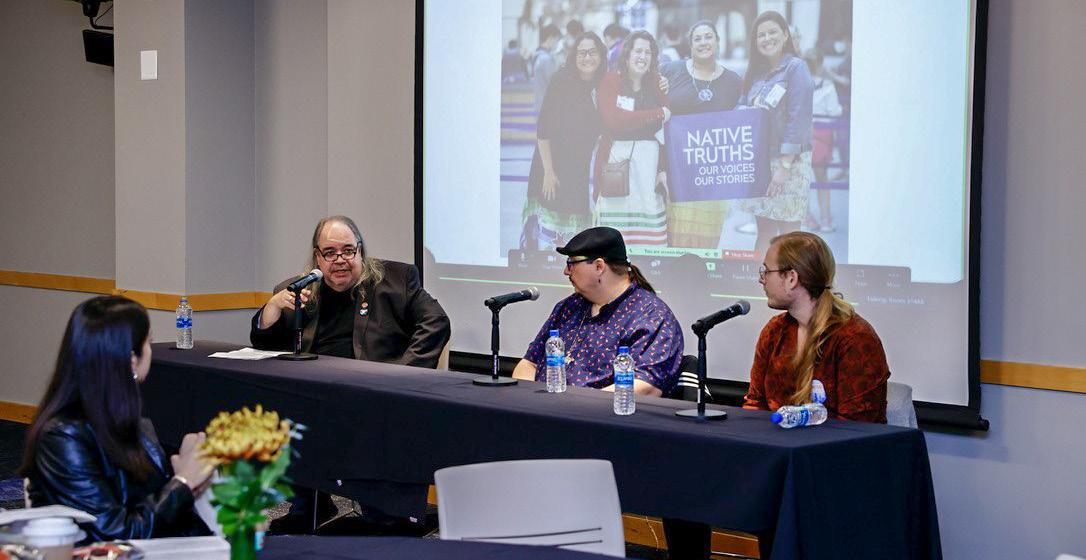
DePaul junior Jada Woodward and sophomore Gabriela Cordova initiated the program, each reading a segment from Native author Linda LeGarde Grover's poem "Everything You Need to Know in Life You'll Learn at Boarding School."
"I connected with the poem mainly through an experience both my father and mother had when they went to Catholic school," Cordova said. "In my father's case he could not speak English when he first immigrated here…and was often punished by the nuns and was forced and sometimes on the coldest days of winter to stand outside in the sign of the cross and hold bricks."
For Woodward, the poem represented a more personal connection.
"This poem is very similar to my experience in Catholic school. I was often chastised for speaking African American vernacular English, which according to the institution was not proper English," Woodward said.
Structured as a panel discussion and later a Q&A with the audience Mark Turcotte (Turtle Mountain Ojibwe), DePaul English professor moderated the dialogue regarding the exhibit.
"It can be thought of as a reboot of the institution and its relationship with native people," Kiel said, serving as an adviser on the museum's Native American Advisory committee. "Now the museum is not in a relationship of being this extractive entity...but is actually there to provide things for native communities."
Comprising nearly 400 artifacts, "Native Truths" seeks to illustrate the rich history and traditions of Native American culture while also highlighting contemporary issues within Indigenous communities, such as tribal sovereignty and threats against their land.

"We started this project back in 2018 with an advisory group of 11 Native Americans and First Nations Museum professionals and academics from the U.S. and Canada," Schuessler said. "It [the new exhibit] builds representation over time because the exhibit does not try to be comprehensive about all Native American history and experiences."
However, the museums and the city's relationship with native communities were not always so progressive.
"One of the things I learned is that Chicago was one of the relocation cities last century and I found there were several people who I remembered whose families remembered the Field Museum anthropologist from the late 1800s,” Schuessler said. "It was emotional and fraud, and people did not trust us at first."
Following the 1956 Native American Relocation Act, the federal government sought to
drive individuals from their reservations into urban centers such as Chicago. By the end of the 20th century, over 40,000 Native Americans resided within the city.
One unique aspect of the museum's updated collection is its decision to commission art from native artists rather than showcasing items acquired through unethical means.
"So much of the institution's history in terms of collecting these materials premised upon the idea that none of this stuff is ever gonna be made again, it's salvage anthropology," Keil said. "If I remember right, there were around 50 or 60 pieces that the Field Museum commissioned from artists, all over the exhibit."
Furthermore, in recognition of the fluctuations and developments that all cultures have experienced over the years, the institution plans on regularly changing the exhibit's layout to reflect this diversity.
However, while the Field Museum continues to make progressive strides in its treatment of Indigenous history, problems still remain.
W. Rockwell Wirtz, the owner of the Chicago Blackhawks, whose name and logo continue to epitomize the nation's legacy of genocide and imperialism, remains chair of the museum's board of trustees, spurring some native groups to withdraw from the exhibit in protest.
"It [Wirtz position] renders everything that has been achieved in this exhibition as kind of a window dressing. It feels disingenuous a little bit for us, especially native people, that the Field is making this new claim to redoing what they've been representing," Turcotte said.
Although Wirtz did not have any connection or say in the exhibit, according to Keil, the Field's close relationship to him still causes some to question the authenticity of "Native Truths."
"It's unfortunate that there is that link, and it's a very bothersome link, but people make sure that he and the team don't have any sort of relationship with this exhibit," Keil said.
However, while Wirtz’s presence must be acknowledged, it should not take away from the museum’s deliberate effort of letting Native American and Indigenous people tell their own stories.
“I feel pretty strongly about that because I’m Native. But I also believe that the Field
Museum
Though flaws still remain, it is evident that museum leadership and members of the Native Advisory Committee are devoted to re-es-
tablishing the way colonial institutions tell the complex narrative of their history.
"The point is where we started, the Field Museum's relationship with native people was in a bad place…And so this is all a big effort to try and start moving forward in a better direction and start building a positive legacy," Keil said.
is making claims to be trying to rectify a very murky relationship with Native people,” said Turcotte. “I know the people in the institution who are trying to make that happen, and they are not disingenuous. They are sincere.”@FIELDMUSEUM | INSTAGRAM Scholars from over 105 Tribes and Nations contributed to the updated exhibits. Birch bark baskets created by the Odawa and Pokagon Tribes of the Great Lakes are on displays in the "Native Truths" exhibition. @FIELDMUSEUM | INSTAGRAM
It is once again the time of year for the age-old debate of when the appropriate time to begin playing Christmas music is.
For students like junior Natalie Trinidad, the right time to listen to Christmas music is on Nov. 1, but specifically at midnight when Halloween ends.
“The sooner you start listening to Christmas music, the more time you’ll have to enjoy the holiday season,” Trinidad said. “Christmas music is really good.
Not only do most songs sound musically good, [but] a lot of the time the lyrics are very cheerful and joyful.”

Similarly, junior Isabel Rivera said anytime after Halloween is the proper time to listen to Christmas music.
“Christmas music is good in the Christmas season,” Rivera said.
“Not every single Christmas song is good, but the general mood of the songs are good mood boosters especially during the beginning of winter.
Christmas has positive connotations so Christmas music can bring joy during a season that may be stressful.”

Alternatively, sophomore Bennett Eller Baud and freshman Faith Mudra said the best time to listen to Christmas music is after Thanksgiving so fall can have its time to shine.
“Sure retail stores play it right after
Halloween but I believe after thanksgiving is the right time to start listening to Christmas music,” Eller Baud said.
While the time that people begin to listen to Christmas music can be quite controversial, for many, the music is still something that sparks memories of family and togetherness.
To remember her grandmother around the holidays, Trinidad will make tamales every year.
Trinidad said she likes to make tamales around the holidays because that is what she and her grandmother used to do.
Trinidad said she spends a lot of time with her family during the break because she is given the opportunity to not commute back and forth to school.
“When listening to Christmas music, I think about my sisters and I helping my mom decorate the tree,” Trinidad said.
“I also think about warm hot chocolate and movie marathons my sisters and I would have with my parents.”
Rivera said her family also celebrates Christmas by eating tamales and decorating the house.
She said Christmas music brings out her fond memories of putting up Christmas lights and building snowmen with her family.
“I will [be traveling home for break] because my family lives in Texas, so I want to spend the holidays with them like I always have in the past,” Rivera said.
Eller Baud said that while he does not get the same feeling he did when he listened to Christmas music as a kid, it always reminds him of family and the traditions his family practices every year.
“When I think of Christmas, some of the memories I remember are watching Christmas movies such as The Grinch, Home Alone, Frosty the Snowman and much more,” Eller Baud said.
“I also remember making cookies with my family and going to the malls to shop for gifts.
I can’t help but [also] remember leaving letters and cookies for Santa [as a kid].”
Mudra said listening to Christmas songs reminds her of when her whole extended family hangs out until 2:00 a.m. on Christmas Eve and opens presents, eats dessert and catches up on what is new in everyones’ lives.
Regardless of when someone decides
to begin listening to Christmas music, the music brings them and their families together and sparks joy throughout the holiday season.
To see some of DePaul students’ favorite Christmas songs, take a look at The DePaulia’s Spotify playlist.
Chicago is often known for its unpredictable and treacherous winter seasons, but students in the city have found plenty of ways to keep themselves entertained without locking themselves inside for movies every night.
Chicago averages 28.1 inches of snowfall annually and averages temperatures as low as 26.4 degrees F, and can feel much colder due to the wind from Lake Michigan.
“I moved to Chicago to go to DePaul, and while I’ve only been here a few months, I’m worried that once Winter hits I won’t have as much to do,” said DePaul freshman Beau Rass..
For those who celebrate, Chicago holiday events are abundant.
The Lincoln Park Zoo Lights will run from Nov. 19 to Jan. 01 this year.
The Zoo Lights are affordable, with plenty of free and $5 nights, and provide Chicagoans the opportunity to see one of the biggest lights displays in the Midwest, with more than 1,000,000 lights!
Other iconic holiday events in Chicago include the Tree Lighting Ceremony, which takes place on Nov. 18 this year in Grainger Plaza near the Cloud Gate or “The Bean.”
The 109-year tradition includes fireworks every year as well.
Chicagoans can also explore the Christkindlmarket in nearby Daley Pla -
za, with vendors selling holiday themed food, drinks and goods.
However, it would be wise to avoid the market on the day of the tree lighting, as lines can get quite long.
“I was initially scared to move to Chicago because I’ve heard so many stories about the winters here,” said DePaul senior Maddie Carter.
“But I think that Chicagoans are determined to have fun no matter what the weather is because there’s always fun events and things to do with friends.
We go ice skating every year.”
Ice skating is another iconic winter pastime in Chicago.
While there are plenty of places to go ice skating, Millennium Parks’ McCor-
mick Tribune ice rink is arguably the most iconic.
The rink is open from November to March, and the experience is free besides skate rentals.
Ice skating is available in a number of other iconic Chicago locations, including Wrigley Square and Grant Park.

There are also ice skating opportunities that take a little more planning, but can be worth the photo opportunity, such as The Sky Rink at the Peninsula Hotel Chicago, which lets visitors skate on top of Michigan Avenue.
The CTA is transformed with festive lights and decorations every year to celebrate the holidays.
If you’re willing to brave the cold to find it, the Santa-driven train car can be
quite a sight.
“We stumbled upon the holiday train by accident freshman year,” said DePaul senior Maddie Anderson. “It’s honestly crazy how many winter festivities you can find by accident in Chicago if you just explore the city.”
Students, especially those residing on campus, should also be sure to keep up-to-date with DePaul winter events.
A comprehensive list can be found at events.depaul.edu.
Students can keep up to date with DePaul sports schedules on the website as well, including the school’s Basketball and Volleyball teams.
Intramural sports, including Basketball, Volleyball and indoor Soccer, are another great opportunity for students to stay active during the winter, without spending a dime.
All intramural sports are free, and students can register as free agents to find a team without having a large group already set up.
Chicago may be notorious for its harsh winters, but Chicagoans are just as famous for their ability to find fun in the cold weather.
As long as students are willing to explore their city and stay connected with their school, winter can be just as eventful as any other Chicago season.

Park Chan-wook is always looking to raise the stakes. Whether it is intricate themes of Freudian desire, outmoded filmmaking techniques or convoluted plotting, his films are always infused with some nuance that overwhelms the mind or senses. His latest picture, “Decision to Leave,” is no different.
A cerebral story of loss and obsession, “Decision to Leave” is like if Hitchcock’s “Vertigo” was inflected for modern times.
It tells the tale of Hae-Jun, a detective whose marriage to Soo-Wan, an eccentric woman, is corroding due to his all consuming professional life which is split between working cases in Busan and his home in the misty town of Ipo.

When Hae-Jun is tasked with investigating the suspicious death of a bureaucrat, the widow, Seo-Rae, becomes both the prime suspect and object of Hae-Jun’s desires.
In the vein of 1940s and ‘50s noirs, “Decision to Leave” expands on this plot in a serpentine way, weaving various narrative threads into a maze that ensnares the viewer.
However, what really makes Park Chan-wook’s direction so effective is when he chooses to depart from convention. Standard structure means little to him, and emphasis is instead put on Hae-Jun’s subjective experience and its manifestation.
Techniques often deemed archaic are no stranger to Park Chan-wook. His previous films, most notably “The Handmaiden” and “Stoker,” often synthesized elements of both the old and new to accentuate the tone of the picture. This trend continues in “Decision to Leave.” Hae-Jun’s psychological state is frequently shown through editing choices such as wipes and superimpositions while the orchestral score compliments the action. These might be considered outdated, but the film is clearly a pastiche of noirs from years past. It is effective on its own terms.
However, as previously mentioned, paying homage to the old is not Park Chan-wook’s sole priority. A central theme in “Decision to Leave'' is the intertwining of technology and tradition, the artificial and the natural. All the characters are surrounded by natural beauty, like mountains, beaches or snow, yet so much of their lives are mediated through technology. Hae-Jun’s wife is constantly citing obscure New Age lifestyle advice she gleans from the internet. The detectives and suspects in the case are perpetually consulting their devices.
When Hae-Jun suggests destroying a phone which holds compromising evidence, it thematically comes back to haunt him like a phantom. With this in mind, it makes perfect sense that Park Chan-wook would combine old and new filmmaking techniques.
In this respect, it is refreshing to see a director actively attempt to engage with
more challenging aspects of the current times. Many of the most famous living filmmakers, Quentin Tarantino, Martin Scorsese and Wes Anderson just to name a few, are telling valuable stories, but they are still stories of the past. Their period pieces are more concerned with illuminating a certain aspect of history. There is undoubtedly value to this, but it does beg the question: Where are films that deal with the current moment? Even films set in the present often eschew realistic representations of technology.
“Decision to Leave” pushes back against this technological aversion. Park Chan-wook has always been concerned with both modernity and the past, but “Decision to Leave” pushes his style and themes in new directions by connecting the two in such explicit fashion.
On top of the thematic concerns of
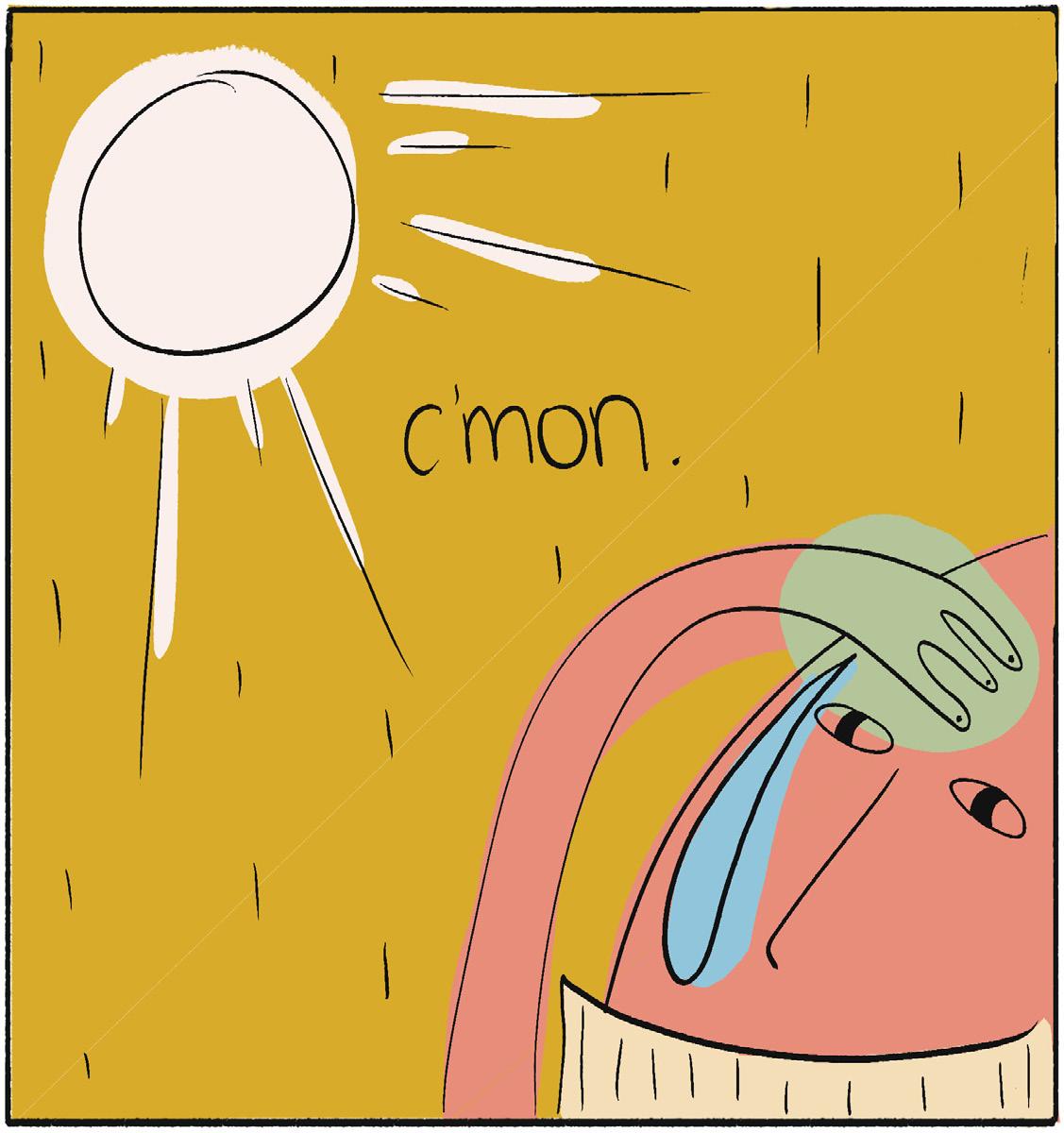
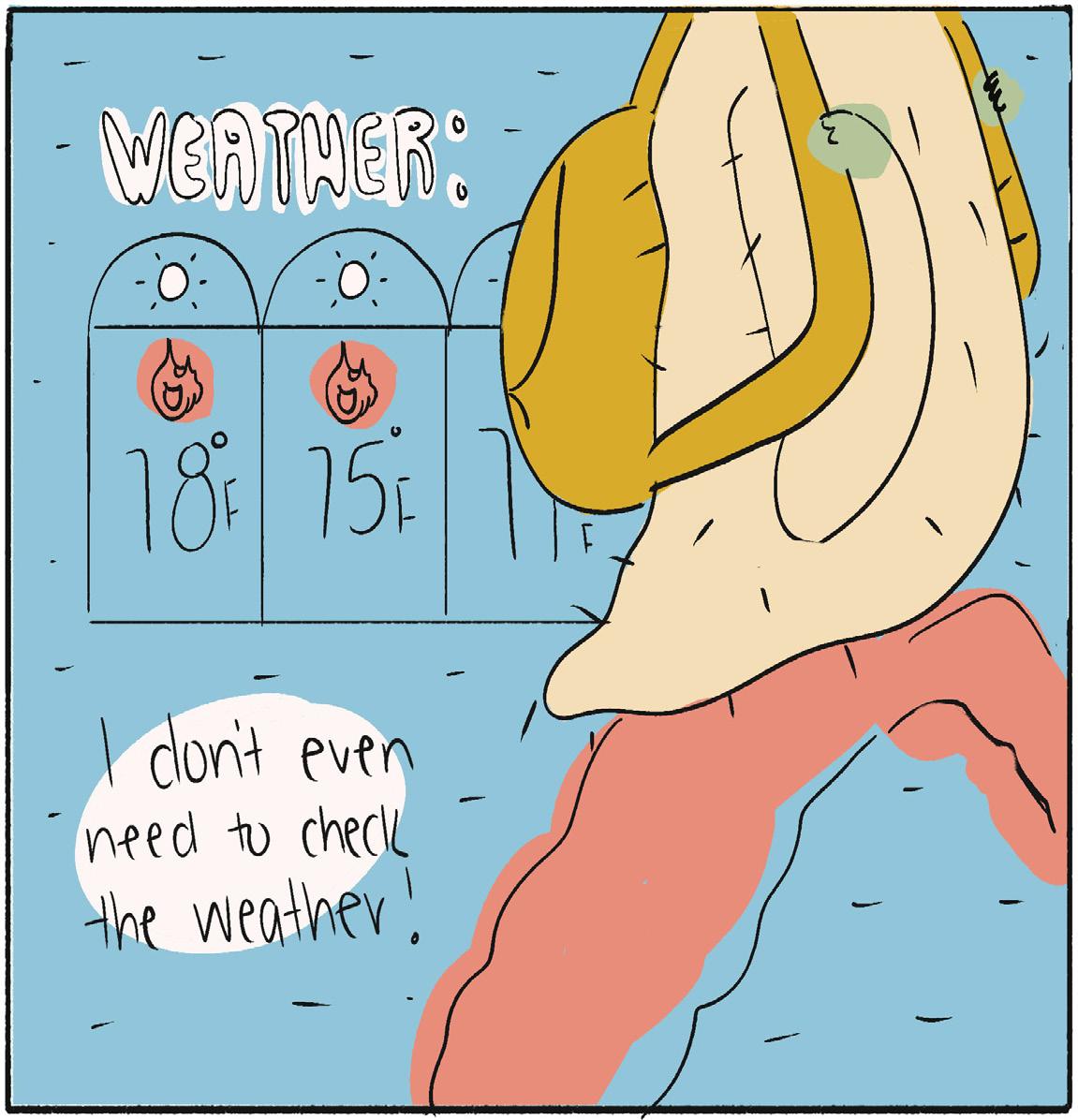
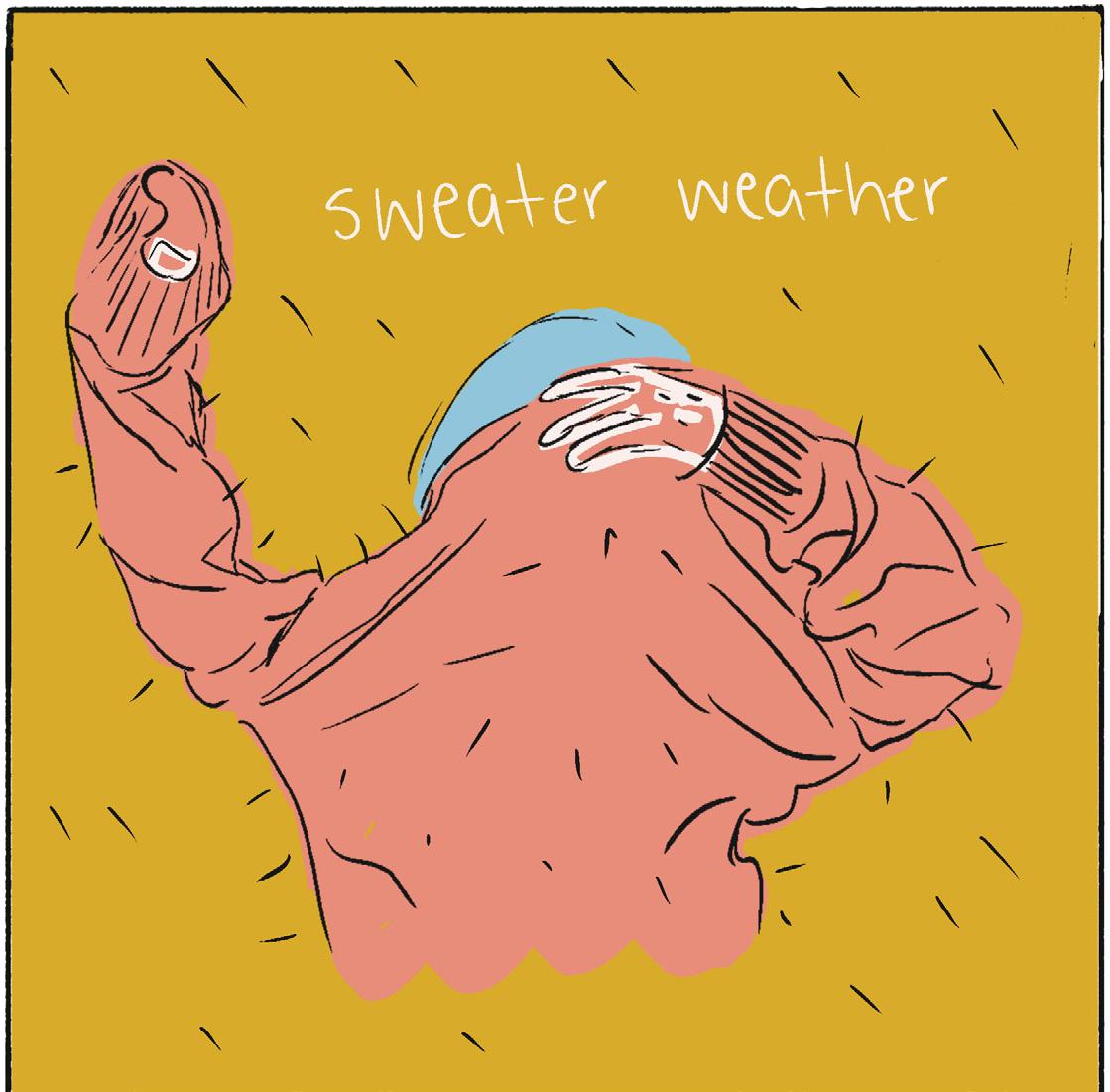
the film, it also carries a pure sense of entertainment. Humor, action and romance seamlessly intertwine to create a tonal tapestry. A multitude of different styles and genres sift through in such masterful fashion that “Decision to Leave” almost necessitates a second viewing so that the viewer can appreciate the film on both a visceral and cerebral level.
Perhaps it is just the pessimism of our current times that has drawn filmmakers to the past instead of the present.
“Decision to Leave” shows that engagement with both time periods simultaneously is not only possible, but can elucidate deeper aesthetic and ideological truths.
Admittedly, it takes a special talent to achieve that, but thankfully Park Chanwook is up to the task.

Twelve years ago the sketch comedy website Funny or Die posted a fake trailer for a Weird Al biopic. Starring Aaron Paul of “Breaking Bad” as Yankovic, the trailer parodied the familiarly formulaic music biopics that Hollywood cranks out every year. This joke trailer was adapted into a feature film called “Weird: The Al Yankovic Story” starring Daniel Radcliff as Weird Al, which is now streaming on the Roku Channel.
Both the 12-year-old trailer and the new movie are directed by Eric Appel. The movie and trailer are both built around the same concept, making a mockery of biopics about famous musicians. By embellishing and outright lying about Weird Al’s life, the movie masterfully pokes fun at an entire genre of film.
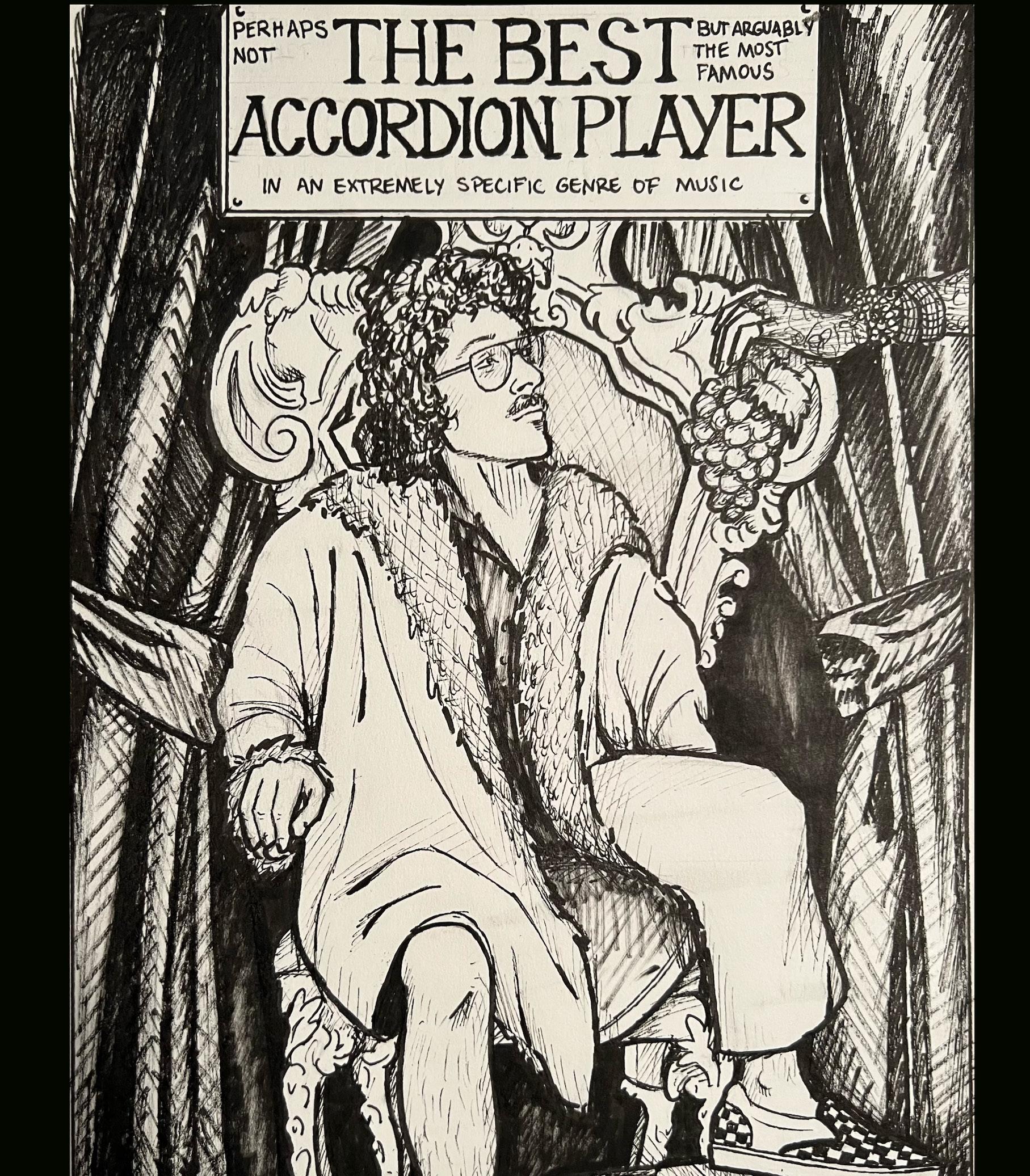
“Weird: The Al Yankovic Story” is loosely based on the life of the most successful parody artist of our time.Weird Al is best known for his parodies of 80s pop songs, such as “Eat It” ot “Fat.” Radcliff stars as Al Yankovic, a young artist who blew up off his song parodies but wants to transition to writing his own original songs. Both Weird Al’s record label and fictional girlfriend Madonna, played by Evan Rachel Wood, want him to return to parodies for financial gains. This conflict sends Al down a dark path involving alcohol addiction and a showdown with Pablo Escobar.
The story for this movie is obviously not what happened during Weird Al’s career; however, this is exactly on brand for him as a parody artist. In recent years I have grown exhausted with music biopics. “Weird” however breaks that cycle of boredom by ridiculing ev-
The plot is mostly what you would expect for a movie about a musical artist, except for the third act which truly goes off the rails in
The word “homosexual” was coined in Europe in 1869—unleashing stunning depictions of same-sex desire in the visual arts world. Discover how artists across five continents expressed queer identity in this pioneering survey of paintings, drawings, prints, photographs, film clips, and many national treasures—from public and private collections around the globe.
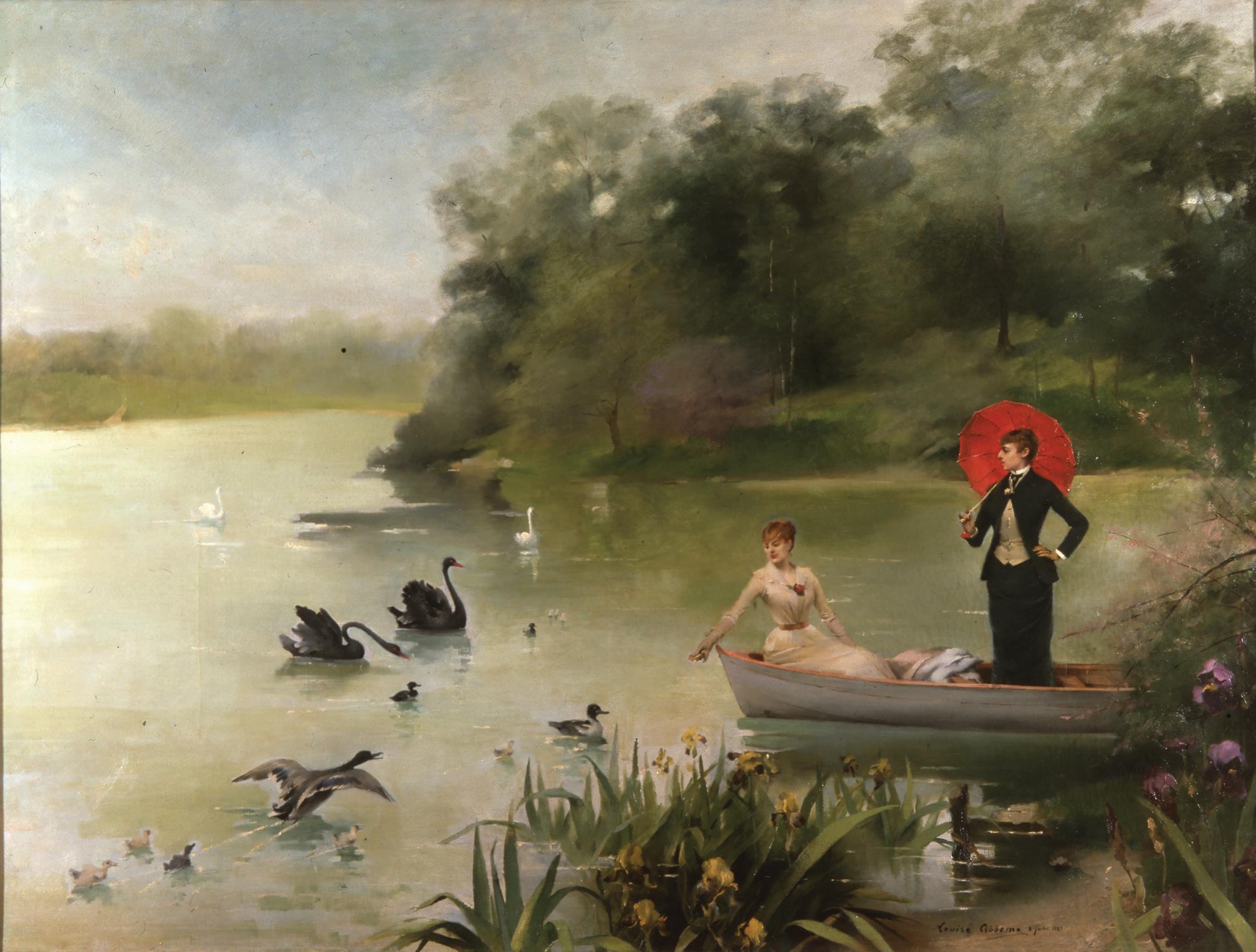
them away through addiction and selfishness, and finally the artist goes on their redemption arc and becomes beloved again. If this movie did not have the sense of humor that it did, this plot would be less entertaining than watching paint dry. Luckily, every scene is played for laughs or to make fun of something.
Radcliff is hysterical as this angry, serious version of Weird Al. This is by no means one of the best performances of the year, but Radcliff perfectly commits to the ridiculous atmosphere of the movie. Almost every supporting character or background face is played by a moderately famous comedian or actor doing an impression of someone who was influential on young Weird Al. The best of these is Rainn Wilson as Dr. Demento, an eccentric radio DJ who was a mentor and hero to Yankovic.
One area where “Weird” falls flat are the visuals. The shots look like something you would see on cable TV. Most comedies have the problem of uninteresting shots, so this is not surprising, but I was expecting a little bit more flair out of this movie. Additionally, there
Michiko Itatani has grappled with the mysteries of the universe in her work throughout her prolific career. This exhibition of 50 works celebrates the Chicago-based, American artist’s determination to “know the unknown.” Spanning two floors and myriad decades, the exhibition includes breathtaking, never-before-seen works.
 ery convention of the genre.
ery convention of the genre.
“Spinning freSh beatS Since 1581”

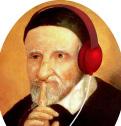 By LiLLy K eLLer Arts & Life Editor
By LiLLy K eLLer Arts & Life Editor
As the temperature begins to slip and shades of gray perpetually swallow the sun, I, like many others, am starting to feel the full weight of fall quarter on my shoulders. Perhaps it is the ungodly amount of assignments that threaten to pull me under as I write this, but these past 10 weeks have been as taxing as they have been rewarding.
However, while I may complain, we are almost to the finish. With only a handful of days left until the holy grail of breaks, I invite you to take a moment and rest because if anyone deserves a second to breathe, it's you.
"Knockin' On Heaven's Door" – Bob Dylan
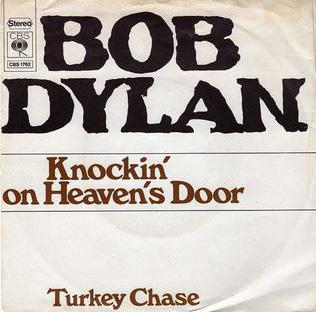
I don't care what anyone says, Bob Dylan's version of this song will always be the best. Sorry, Guns N' Roses. Something about the soft lull of the guitar combined with Dylan's melancholy lyrics simultaneously makes me want to cry and stare at a wall unmoving for hours. If you're looking for a song encapsu-
lating November's colorless yet sentimental vibes, look no further.
"Exile" – Taylor Swift feat. Bon Iver
While I may be a casual fan of Swift, this song will always be one of my favorites. Something so unspeakably tragic lingers within the narrative Swift and Iver craft about two ex-lovers running into each other after everything is said and done. I'm also pretty sure "I think I've seen this film before / And I didn't like the ending" is one of the catchiest lyrics of all time.
"Inside Out" – Duster

In truth, treating DeJamz like my diary fashion, I find few songs quite as depressing as this one. Unfortunately, I ruined this song for myself after listening to it constantly after my dog unexpectedly died last December. Therefore, I am flooded with memories of crying with my parents at 3:00 a.m. While I hope you all hold fonder connections with this song, I cannot help but feel that this song's bleak melody was meant to be listened to when mourning an unanticipated loss.
Bet on Losing Dogs – Mitski

I am just now realizing the irony of talking about my dead dog and having "I Bet on the Losing Dogs" follow. Easily one of Mitski's most depressing songs, there is something about the metaphor of "betting on losing dogs" that makes me want to walk into oncoming traffic. For the maximized effect of this melody, I recommend listening to it while walking to your 8:00 a.m. class when it's extra windy and has a maximum temperature of 40 degrees.
"A Lot's Gonna Change" – Weyes Blood
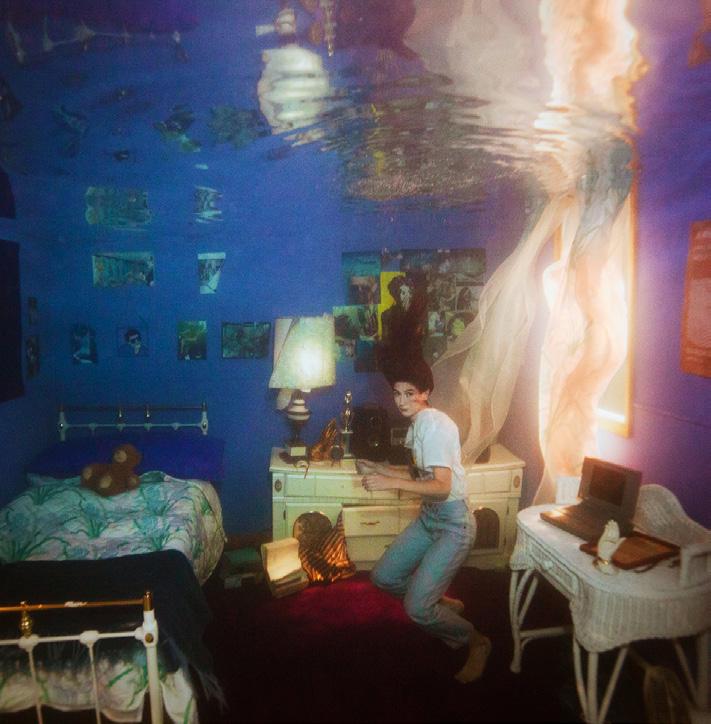
If there is one thing that makes me despondent, it is songs that yearn to retire to the simplicity of childhood. Whatever you do, I urge you not to think of your younger self when listening to this song. Don't do it. This larger-than-life melody always puts me in a simultaneously wistful yet hopeful headspace, or what I have deemed the best time to procrastinate every single expectation of myself.

The Blue Demons did not skip a beat Wednesday, with a 96-45 win over American University. DePaul women’s basketball showed glimpses of this season’s potential, as four players ended the season opener with double figures in the scoring column.

DePaul jumped out to a 24-8 lead as the first quarter came to an end. They never looked back as they held their largest lead of the game of 51 points at the 2:51 minute mark of the fourth quarter.
Wednesday’s win made DePaul 37-12 all-time in season openers.
“You never know what you’re going to get when you open the season,” head coach Doug Bruno said. “You’re really excited for the season to start and you’ve watched your team in practice and you’re excited for what you’ve seen in practice, but you don’t know what’s going to happen until you hit the floor.”
Campaigning for another All-American season, sophomore Aneesah Morrow picked up where she left off from the 202122 season, leading the way in scoring for DePaul with 24 points. She shot an efficient 10-17 from the field to go along with eight rebounds and six steals.
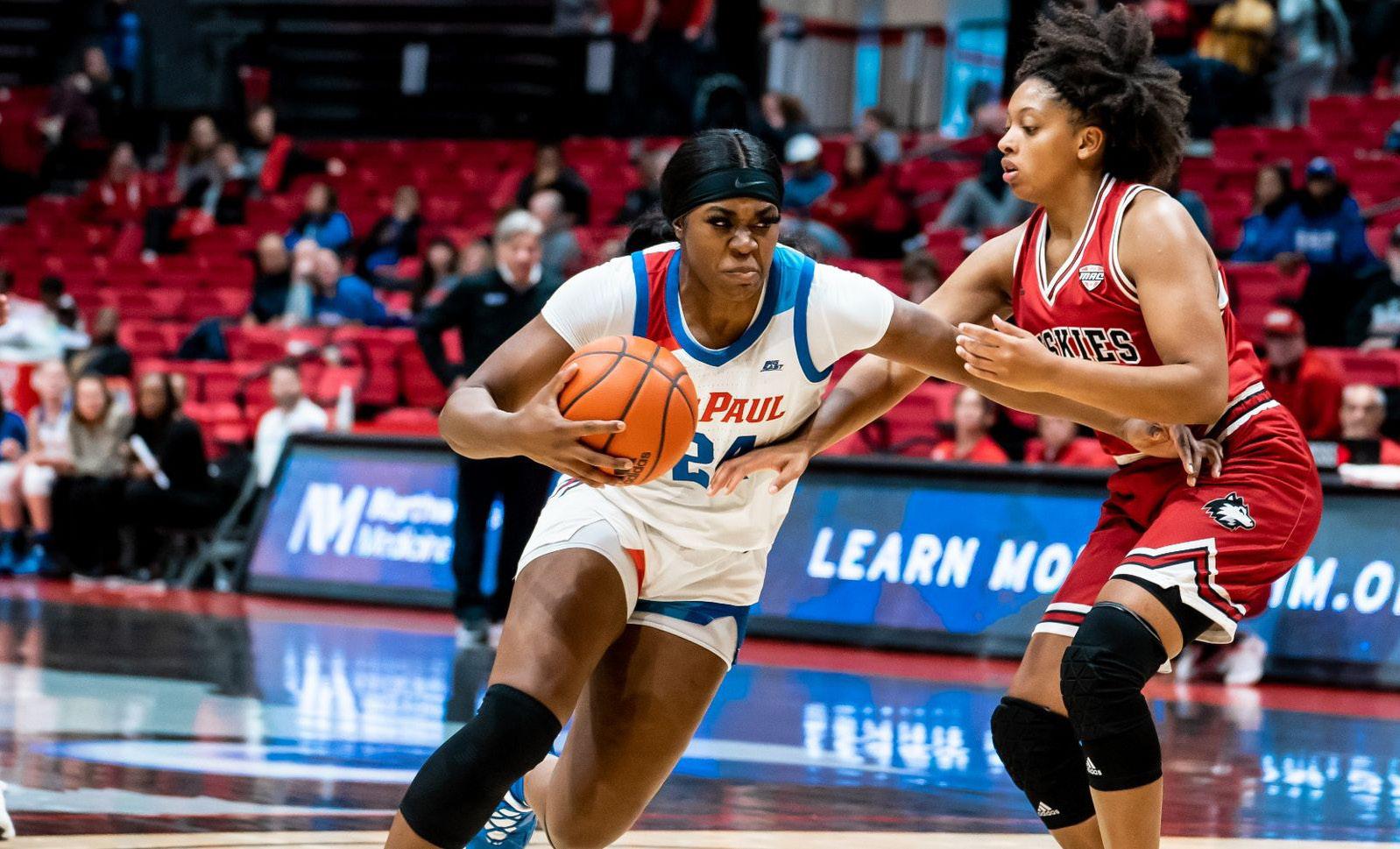
Morrow spoke about her preparation coming into the season and how she could build off last season’s performances.
“Just stay focused, not being complacent,” Morrow said. “I feel that’s the biggest thing for me, throughout the summer staying focused and continuing to set goals on a daily basis.”
For a team lacking size around the rim, Peoples, a 5-foot-10 guard, showed her versatility, recording her sixth career double-double and her first as a member of the Blue Demons. She finished the night with 14 points, 10 rebounds and a block.
“I worked on my game a lot, but like
coach Bruno, he believed in since 8th grade, this is what I’ve been able to do,” Peoples said. “Just be an all around player. Assist, get rebounds, score when needed, so I mean I did work a lot in the off-season, but honestly that’s just my game. Having a coach who believes in me, teammates who believe in me is what changed.”
As for Edwards, she struggled in her debut playing against her former team. Edwards was 0-5 on field goal attempts in her 22 minutes of play, showing signs that she is still adjusting to new roles on the team.
Three-point shooting through two games has been an issue for the Blue Demons throughout the season, but not for junior Darrione Rogers. Last season, Rogers shot 40% from three, making 62, which was second on the team. She was one of four players to get into double figures Wednesday, finishing with 18 points, while shooting 2-7 from three.
The game plan never changed for DePaul, even with so many players down. The Blue Demons were aggressive on the boards, and creating second chance points
played a large part in the Blue Demons win.
Bruno and his team were also stout defensively, causing 31 turnovers and four blocks, which led to not only 32 points off turnovers, but 17 fast break points.
Senior Keke Rimmer was finally back on the floor for DePaul. After missing her entire sophomore season in 2020 with an injury, she only appeared in 13 games last year as she was gaining her footing.
Coming off the bench, Rimmer tied her career high with 13 points and achieved a career high with nine rebounds, as she was the main contributor to DePaul’s 34 bench points.
It was a promising sight for the team last night when freshman guards Tara Daye and Zaria Hurston combined for 16 points off the bench. A potential increase in playing time for the two newcomers could be seen in future games as the team continues to get healthy.
“Tonight was a game we could play the freshmen. They are going to have to play,” Bruno said. “It’s just a matter of how many at a time and how much.”
Saturday’s game in DeKalb against the Northern Illinois Huskies exposed those turnovers, and the Blue Demons lack of defensive assignments. They were also tested offensively when their reliable players went quiet.
DePaul was handed their first loss of the young season 86-79 against the NIU Huskies. After completely dominating the first quarter, it looked like they were going to run away with a win.
Sophomore Aneesah Morrow scored the Blue Demons first seven points in 67 seconds, as DePaul finished the first quarter shooting 60% from the field and making a season-high five threes in a quarter.
It all seemed to shift when graduate student guard Jade Edwards left the game midway through the first quarter., Edwards landed awkwardly and immediately fell to the floor in pain. No further information was released about the severity of the injury.
NIU went on to out score DePaul in the remaining three quarters 65-48. The Huskies also took advantage of the three ball, pouring in 12, while the Blue Demons only made 4 the rest of the game.
In the second half, head coach Doug Bruno schemed a full court press under the impression it would rattle the Huskies. It did the complete opposite. NIU was able to break through and continuously find open players at the three or under the basket, resulting in NIU taking their first lead of the game in that third quarter.
The offense in the second half ran through the hands of juniors Kendall Holmes who finished with 15 points and Darrione Rogers with 21. The two kept DePaul afloat while Morrow was held scoreless in the third quarter.
DePaul will look to get back in the win column when host Cleveland State Tuesday night for a 7:00 p.m. CST.
DePaul junior hockey goalie and team president Asher Motew knows what it takes to be a successful hockey player. He lives for the sport. It’s in his hockey family’s bloodline and winning a gold medal at the 2022 Maccabiah Games is possibly just the start.
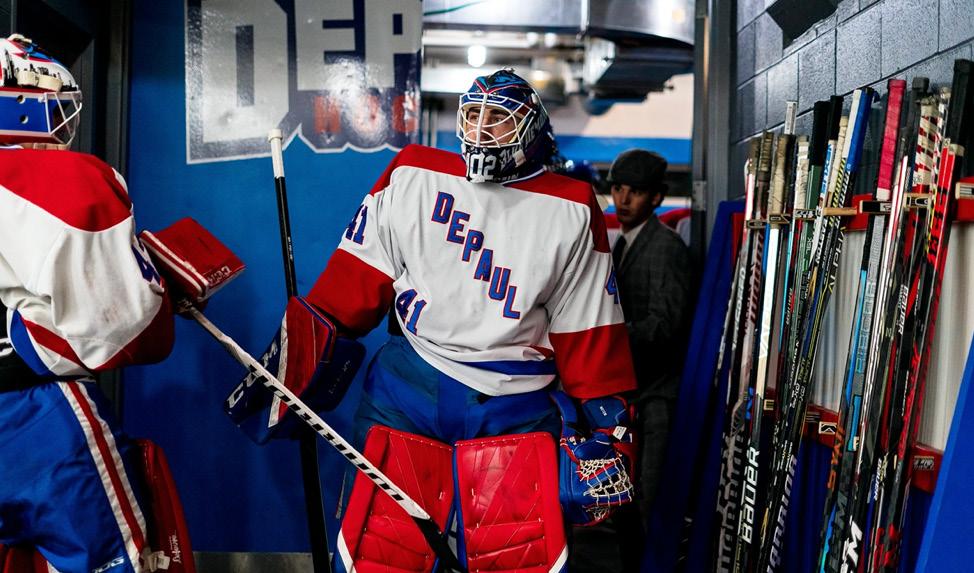

Motew, is a finance major and real estate minor from Highland Park, IL. His mental health mindset is a driving force in his games and life, and he knows a netminder needs to use his head as much as his pads.
“Goalies have to approach the mental game differently,” Motew said. “The biggest difference between me last year and this year preparing for games is staying in the moment and taking care of my mental health.”
Motew is a huge advocate for mental health and not ashamed to lift his goalie mask revealing his inner struggles beneath. Motew meditates and goes to therapy to help stay focused.
“It’s hard for guys, especially in a hockey environment,” Motew said. “Everyone struggles with stuff.”
Motew says his dad was also a goaltender in college, playing at Indiana University, but did not want Asher to be a goalie either.
“My dad has always been my biggest supporter,” Motew said. “My dad just wanted me to be happy and I think he’s seen all the great things that I’ve done at DePaul.”
Motew and his younger brother, Simon, had double hip injuries at the same time when Motew was 17, forcing them to take a year off hockey. Finding his way to DePaul did not come without adversity.
Because of the injuries, Motew could not walk and was immobile for almost two-and-a-half months. Not everyone fully recovers from this surgery, but he and his brother are two of the lucky ones.
“I fell under a spell of mental health stuff,” Motew said. “It was one of the toughest years. I didn’t think I’d ever get out of it.”
He turned himself around when he was sitting on the stairs of his home and heard his mom say, “Oh he’s probably done with hockey.”
“I’m very grateful, I was able to find the other side because for a while, there was a dark tunnel,” he said.
Motew credits having his brother and family to lean on as what pushed him through one of the hardest things he endured and is grateful for them. He says he would die for his family.
Motew is the fourth youngest in a family of five. His oldest brother played hockey at Plymouth State in New Hampshire, his sister used to play hockey and his little brother Simon plays in the Ontario Hockey League.
“He’s the biggest, supportive family guy,” sophomore Vice President and defensemen Ryan Plotke said. “He’s always talking about them. He has two awesome rescue dogs that he could absolutely not live without. He spoils them and treats them like his own babies.”
Motew found his way back to hockey after his injury and grew up playing for Team Illinois, Chicago Mission and the USHL Madison Capitols before his friend and DePaul teammate Jackson Leptich brought him here.
“It changed everything,” Motew said. “I transferred during the second half of my freshman year.”
“When Asher transferred here, he wanted to be involved right off the bat,” last season’s President, Jake Camp, said.
Motew almost played at Ferris State in Big Rapids, MI instead of DePaul, but believes everything happens for a reason.
“I think I’m a DePaul Blue Demon through my blood,” Motew said. “And seeing what we can do here is really special to me.”
Glad he ended up here, Motew is taking this program to new heights.
“I love living close to my family and the environment of the city,” he said. “I am very appreciative of the life I get to live. I had a vision when I got here and kind of the way it’s going right now, I couldn’t really have imagined it any better.”
He credits his vision with the help of Camp, and treasurer, Jake Bolger, on understanding what it is like to run a team.
“I’m super proud of Asher,” Camp said. “He has put the program in a good direction with a 13-1 start. A lot of things we wanted to do like the black jerseys they have he is putting in motion.”
Motew notably made 47 saves against Marquette on Oct. 9, a game DePaul won 7-1.
His teammates and coaches agree that everyone needs an Asher Motew on their team, on and off the ice.
“Asher is a hardworking leader,” Plotke said. “His leadership is like none other. He understands the program better than anyone I know.”
Motew and Camp agree that Asher can be hard on teammates, but players need someone that pushes others to get things done.
His friends and teammates say his optimistic, caring, hardworking, dedicated, obsessive energy helps propel the team’s success.
“I look at it that when I’m with him, I want to be a sponge,” Plotke said. “I listen and observe, soaking up everything he has in his experience of hockey and life.”
Motew loves this team and everything they have accomplished.
“I am very proud of what I have been able to do here,” Motew said. “I am not done. I achieved a lot of the goals I set in 2019.”
Motew brought his goalie coach, Oliver Freij, to DePaul. They have known each other for eight years and met through Motew’s cousin.
“Coach Oliver has always seen the potential in me,” Motew said. “He pushes me every day to be a better goalie and person. At the end of the day, that’s one of the most important things ever.”
Freij describes Motew as a relentless
competitor, and strong, explosive skater who is reliable and eats, breathes and sleeps DePaul hockey.
“He has really put everything he has in the program,” Freij said. “Can’t be overstated enough. He has made a difference on and off the ice for DePaul.”
Freij credits Motew’s hockey adversity in bringing experience to his team role.
“We have a special team here,” Motew said. “Life is bigger than hockey. I care about these kids as individuals.”
Motew wants to leave a legacy on DePaul hockey whether he is here or not, and he has done just that.
“Being president is an honor,” Motew said. He was the former Vice President. “Everything I do is for my players. I want them to have a college experience that they really love.”
Motew won gold in the July 2022 Israel Maccabiah Games.
“Winning gold was one of the most amazing experiences I’ve had in life,” Motew said. “We were the first team to ever win gold for the open division.”
Motew’s brother previously played in this game.
“We celebrated religion, culture and learned things we never would’ve experienced if we didn’t play,” Motew said.
Motew gets the privilege to skate with the NHL every Summer with the help of Simon, and says his family loves the
grind.
“I think that that’s something that has translated to all of our success,” Motew said.
Prior to winning gold in 2022, Motew and teammate, Billy Paschen, played on the Chicago Cougars junior team during Covid when DePaul’s season was halted. He took a quarter off school to play with the Cougars.
Motew and teammates raised $40,000 for this year’s team compared to last year’s $25,000 and focused on developing relationships with companies like Reapers Hockey Association, Mo2 Properties, Goodman Elite Training, First Trust Portfolios, and Firefly Legal to help them.
This allows them to do YouTube live streams of this year’s games, have nicer accommodations at hotels, and lower the costs for players.
When Motew looks around the room, he sees a good group of guys where everyone’s there for each other.
“The positivity in this room is something I’ve only very rarely experienced on all the teams I’ve played for 17 years now,” Motew said.
but we obviously didn’t do that tonight.”
DePaul snuck out with a win last night. Still, a win is a win. Johnson could be a star in the making for the Blue Demons, as late in the game he delivered when his team needed him most on both ends of the court. The graduate senior forward had a block and steal each to go with shooting four-for-seven beyond the arc.
“I think Javan [Johnson] played extremely well,” Stubblefield said. “He’s a young man that’s worked really hard and I thought he came into his own last year when he had the injury. And obviously he’s bounced back from that injury, worked really hard, had a great summer, fall and preseason for us. He’a a really good player.”
DePaul men’s basketball picked up their second win of the season after defeating Western Illinois 86-74 on Friday night, led by Umoja Gibson’s 24 points and Yor Anei’s career-high five blocks.
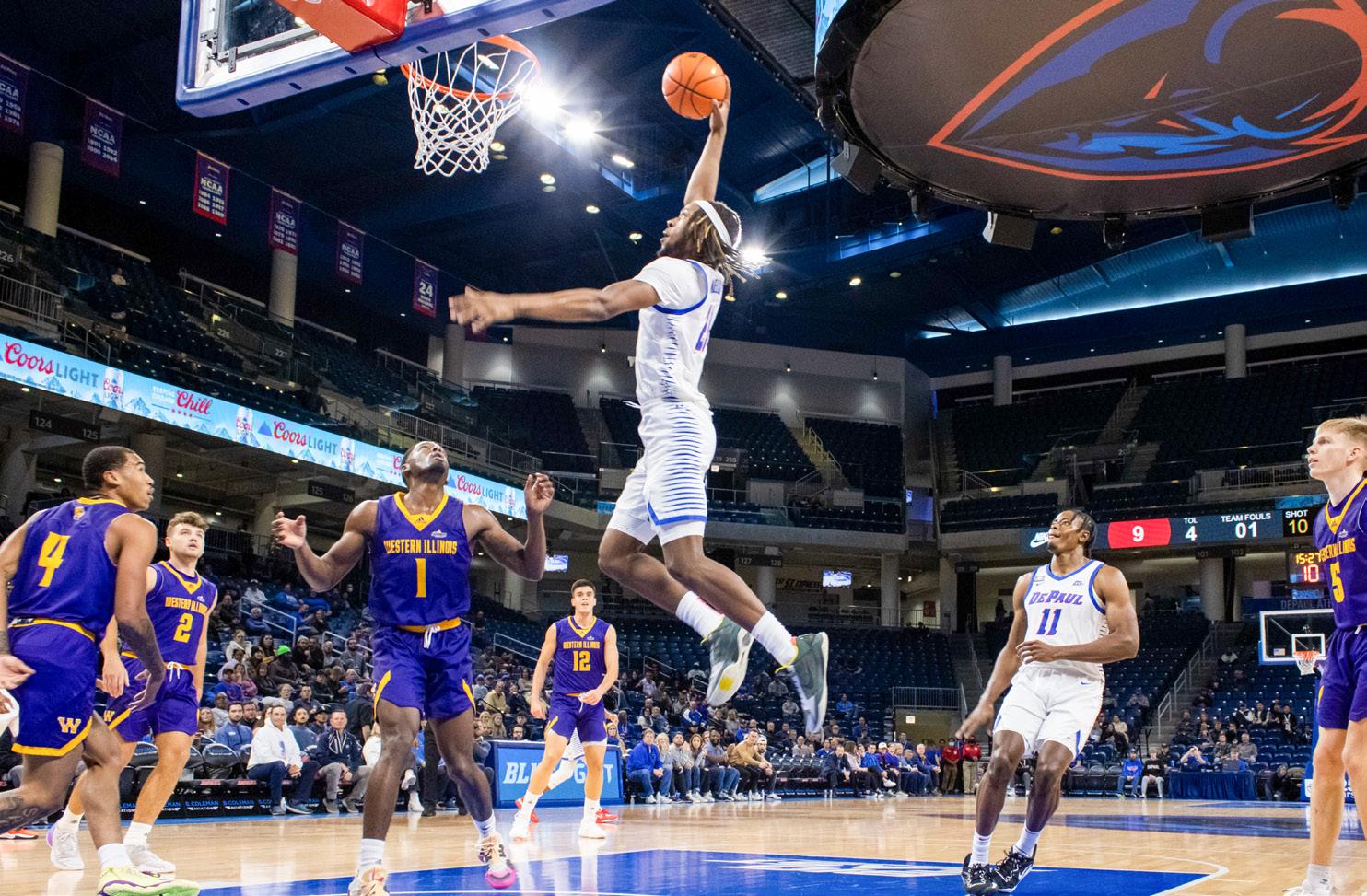
“I feel like we played a better game today over the course of 40 minutes than we did on Monday,” head coach Tony Stubblefield said. “I think our guys played with good intensity, we held them to 37% from two and 20% from three, so from a defensive standpoint I really like that. I feel like we still have a lot of room for improvement.”
Prior to the start of the game, similar to Monday, two Blue Demons weren’t dressed to play including junior guard Caleb Murphy (wrist) and senior center Nick Ongenda (hand).
“He’s [Ongenda] hanging in there, I feel bad for Nick” Stubblefield said. “Nick had one of the best offseasons that I’ve seen a player have from a confidence standpoint of the work he put in. This
happened the day before the season opener, so I really feel bad for Nick because he worked extremely hard, but he’ll come back even better from this.”
Senior guard Philmon Gebrewhit was active this time around and logged 18 minutes off the bench, scoring four points, three rebounds and an assist.
The first half of the game was all about graduate transfer Umoja Gibson and he accounted for 17 of DePaul’s 42 first half points. The Leathernecks had no answer for him and double covered graduate student Javan Johnson tightly throughout the game.
“I really was taking what they were giving me,” Gibson said. “They sag off the screen, I was taking my shot. If he was coming up, I was making the right reads and letting the game come to me.”
Gibson stepped up, finishing with 24 points, two rebounds, eight assists and two steals along with shooting four-for-
five from beyond the arc. He’s showing off skills that not many Blue Demon guards have had in recent years. Gibson is becoming a true facilitator of the basketball and his performance on Friday night solidified it.
“Mo [Gibson] brings a lot of things to the table,” Stubblefield said. “Obviously, he does a great job scoring the basketball and he had eight assists today. He can defend and he’s got great leadership skills.”
DePaul’s lackluster offense from their starters in the first half kept Western Illinois in it, they went into halftime leading 42-38. Outside of Gibson’s 17 first half points, DePaul’s next leading scorer was junior transfer Da’Seaon Nelson with seven points off the bench.
The Blue Demons starters weren’t producing early on, but once Nelson entered the game off the bench, he ignited a spark that helped DePaul pick up the win Friday night. He finished with 15 points,
seven rebounds and a few dunks during his 26 minutes of court action.
“I’d say it was decent,” Nelson said about his 15 point performance off the bench.
The Blue Demons pulled away in the second half, out-scoring the Lethernecks 44-38, highlighted by graduate student Yor Anei’four blocks. He recorded four blocks in the first five minutes of game action and finished with five total for the game, which was a career high.
“Yor’s an older experienced guy,” Stubblefield said about Yor Anei’s fiveblock performance. “We expect him to do what he did tonight, he’s a great defender and obviously does a great job at protecting the rim. Yor’s one of the best shot blockers in the country and when he plays with that type of energy, our guys really feed off that.”
The defense paid dividends in the second half for DePaul, setting the tone for the remainder of the game.
The Blue Demons took down the Lethernecks Friday night due to their effectiveness on the defensive side of the ball.
Their defense recorded eight blocks and six steals, while holding Western Illinois to 37.7%from the field and 23.1% from beyond the arc.
DePaul will be back in action on Monday when they travel to Williams Arena to take on the Minnesota Golden Gophers. Tip-off is set for 6:00 PM CST.
“It’s a big challenge for the Big East, Ben Johnson does a great job with his team,” Stubblefield said. “It’s going to be a tough game on the road like any road game. It’s going to be physical like most Big Ten teams play, so it’s definitely going to be a major challenge for us.”
When the weekly rankings were released ahead of Friday’s match up, the American Collegiate Hockey League second central division ranked DePaul at No. 8 and Adrian College at No. 9.

This made the weekend series between the Blue Demons and Bulldogs highly anticipated, bringing the best out of the two teams.
Blue Demons took down the Bulldogs 7-5, highlighted by the senior defensemen Michael Helf and junior defensemen Josh Maloney’s contribution offensively with two crucial goals.
Adrian brought their style of aggressive and hard hitting hockey to Johnny’s Ice House West on Friday. A style the Blue Demons normally don’t play, but are not afraid to showcase when they need to.
Head coach Dan Wood said his team understood the task and the type of game they needed to play against Adrian.
“Whenever we play Adrian it’s always a battle,” Wood said. “They’re a really good team and they play with a lot of intensity, so we knew coming in that we’d have to be working hard.”
Senior winger Brock Ash got the scoring started for the Blue Demons. A turnover near DePaul’s blue line allowed Ash to skate freely on a break away as he put in his 16th goal of the season.
Adrian would respond just 20 seconds later as they got their first shot past junior goalie Asher Motew.
The Blue Demons responded to many of Adrian’s hits against the boards. Junior defenseman Chris Lee was one of many, but by far the most physically active player from DePaul, delivering large blows out in open ice.
Penalties were apparent in Friday’s
game. There were nearly 20 total minutes of penalty time combined between the two teams.
The longest penalty of the game came from Lee’s hit on Adrian’s No. 4 Chase Spencer which resulted in a five minute major for contact to the head. The hit had everyone in Johnny’s Ice House West on their feet, which brought the fans into the game even more.
Five goals were scored in the first period between the two teams in a game that was supposed to feature two good defenses, but instead quickly turned into a shootout.
DePaul went up 3-1 courtesy of a goal from Helf half way through the first period, but the Bulldogs responded quickly, cutting the lead to one heading into the first intermission.
The defense played its part throughout the entirety of the second period. Not a single shot went through, although a total of 23 were placed on goal.
Senior captain Jackson Leptich spoke about how DePaul made sure they continued to play their style of play during the game.
“We played these guys last year, beat them once and they played the same way,” Leptich said. “Those guys were just like that tonight, fast and physical and so you gotta keep your composure and we knew that coming in. I think we did a pretty good job overall doing that.”
Heading into the third period, the two top-10 ranked teams left it all out on the ice. DePaul’s goal horn went off four times in the third, capping off the game clinching goal by Maloney.
“When I scored, we were just on the powerplay. I went outside towards the boards and I just saw a small opening so I just closed my eyes and shot and got lucky.” Maloney said.
Things continued to get chippy between the two teams after a DePaul goal was called off. Eight more minutes of power play times were awarded between the two teams.
As the game progressed the Blue Demons gained more and more momentum and in the end their offensive strengths prevailed as they improved to 14-1.
Nearing the half point of the season, the Blue Demons are headed in the right direction. The remaining schedule gets tougher for DePaul, but the experience gained Friday will allow them to be prepared for the opponents with similar or better talent.
Leptich said the team has stuck by their preseason motivates, which has allowed them to pick up wins throughout the season.
“At the beginning of the year, we set
our sights on specific goals and I think we’re on a great track thus far to achieve all those,” Leptich said. “We want to win nationals and win our conference. Being 14-1 that’s a great start, but we still have a lot of work to do.”
DePaul was scheduled to travel to Adrian, MI for part two of the series, but due to external circumstances, game two was canceled allowing DePaul time to recover and access film over Friday’s win.
The Blue Demons will be back at Johnny’ Ice House on Friday, Nov. 18 at 8:30 PM CST to take on Indiana University, who is currently ranked No. 5 in the southeast division.
DePaul men’s basketball started off the 2022-23 season in the win column after defeating Loyola (MD) 70-63 on Monday night, highlighted by Javan Johnson’s career high 24 points.
The Blue Demons won their fifth straight season opener and improved to 87-14 all-time in the first game of the season.
“Over the course of 40 minutes, I thought we did some good things at times,” head coach Tony Stubblefield said. “I thought our defensive intensity was good for the first 20 minutes of the game. We did a good job sharing the basketball, I just didn’t think we came out with the same intensity that we needed for that second 20 minutes. We’re glad to get the win, but we know we’ve got a lot of things to get better at.”
Prior to the start of the game, three Blue Demons weren’t dressed to play, including junior guard Caleb Murphy (wrist), senior center Nick Ongenda (wrist) and senior guard Philmon Gebrewhit (coach’s decision).
Ongenda was on the court during pregame warmups, but was seen wearing a cast on his left wrist. Gebrewhit didn’t dress due to non-basketball related reasons, which will be resolved internally.
“With Nick’s [Ongenda] injury, I would say he’s day-to-day, week-to-week and it was kind of a freak accident,” Stubblefield said. “It happened in practice on Saturday. With Phil [Gebrewhit], it’s more of an internal situation. It’s nothing from an injury standpoint and it’s more of an internal situation that we have to work through.”
The Blue Demons were in control of the entire first half, entering the break with a 38-25 lead. Javan Johnson and graduate transfer Umoja Gibson played key roles in the first half.
Johnson’s play was sensational from start to finish, but Gibson’s play on both sides of the ball played a key role in DePaul’s victory Monday night. Gibson finished with 12 points, six assists (career high), five rebounds and three steals.
The Blue Demons scored 22 of their 72 points off the fast break, primarily led by Gibson forcing turnovers. He believes this is something we could see from him the
rest of the season.

“Oh yeah most definitely,” Gibson said. “That’s why Coach Stubbs brought me here to run the point guard position more and just lead the team. You can definitely see me run the fast break more and create more opportunities for others and myself throughout the course of the season.”
Johnson stepped up during last night’s victory notching his first career double-double, scoring 24 points and 10 rebounds, knowing Caleb Murphy and Nick Ongenda weren’t expected to play.
“I felt like I was scoring throughout the flow of the game,” Johnson said. “I wasn’t forcing too much and Mo [Umoja Gibson] was able to find me a couple of threes. I didn’t feel any pressure because they were hurt. I just played within the game.”
It was all DePaul in the first half, but they struggled to put the game away in the second. The Greyhounds kept batting and after DePaul had multiple 13-point leads throughout the game, eventually the Greyhounds brought it to six.

“We were able to build a 13-point lead a couple times tonight,” Stubblefield said. “We’ve got to be able to build off that lead,
The Big East announced its regular season award winners Wednesday, naming DePaul graduate senior Jake Fuderer to the All-Big East Third Team.
This marks the fourth consecutive season that the left back has won all-conference honors.
Fuderer made the Big East All-Academic team in 2019-2020, the All-Big East Third Team in 2020-21 and the AllBig East Second Team in 2021.
Fuderer also received honors in the last week of the regular season, winning Big East Defensive Player of the Week after an impressive performance in his career finale.
In playing the full 90 minutes of DePaul’s 3-3 tie with Villanova, Fuderer tallied two goals in his last collegiate game.
For the third time, Fuderer finished the season as DePaul’s leading scorer, re -
cording four goals in the 2022 campaign. His four goals this season inks a career total of 13 in 75 total games throughout
his five seasons as a Blue Demon.
On Thursday, DePaul men’s soccer announced two
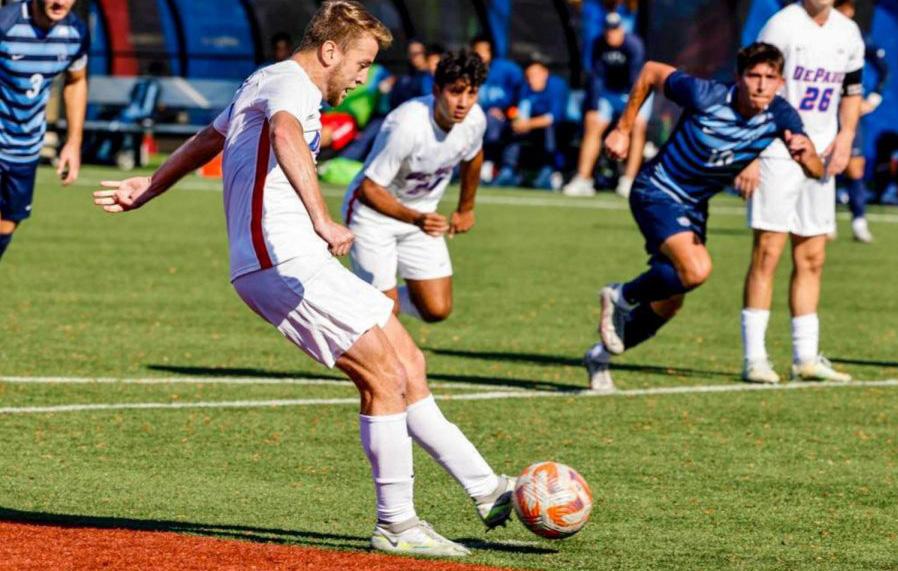
Coleman, listed at left back, adds size and speed as an outside defender for DePaul next year, standing at 5 ‘11” and weighing 170 pounds.
The Kent WA native is a product of the Major League Soccer (MLS) elite youth development platform, the Shattuck St. Mary’s Soccer Center of Excellence in Faribault MN.
Mullins is listed at 6’0” and will likely play as a winger and forward at DePaul. Mullins is also an MLS development academy product, currently training with the Phoenix Rising FC USL youth academy under 19 team in Scottsdale AZ.
Currently, 18 of the 28 players on DePaul’s 2022 roster are from Illinois. The two incoming players show an effort by DePaul head coach Mark Plotkin and staff to extend their reach and add talent from other regions.